SnowSurfing




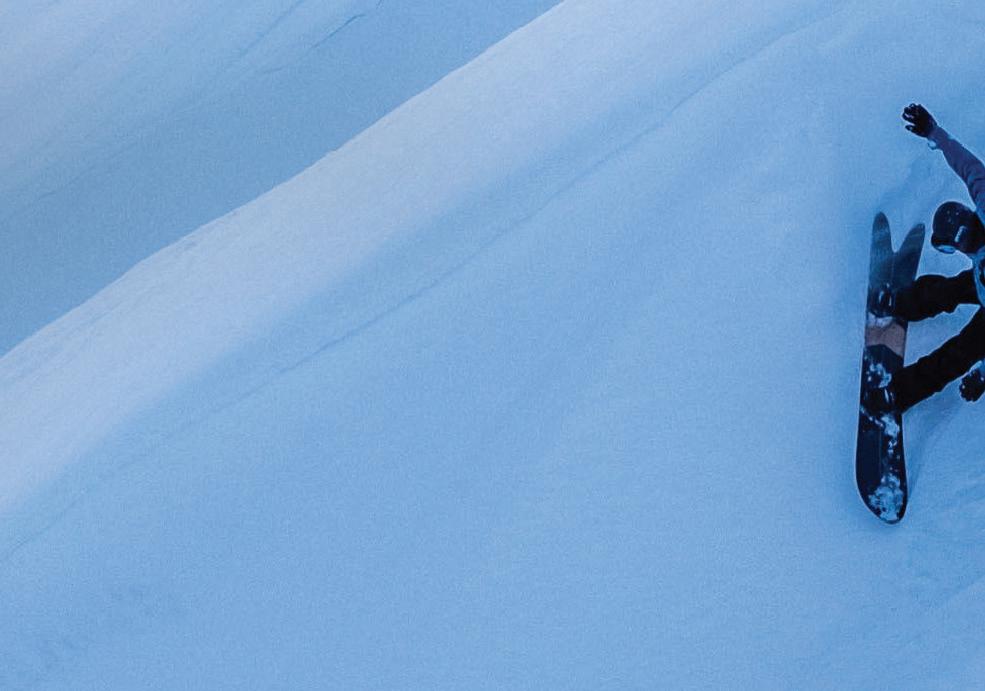



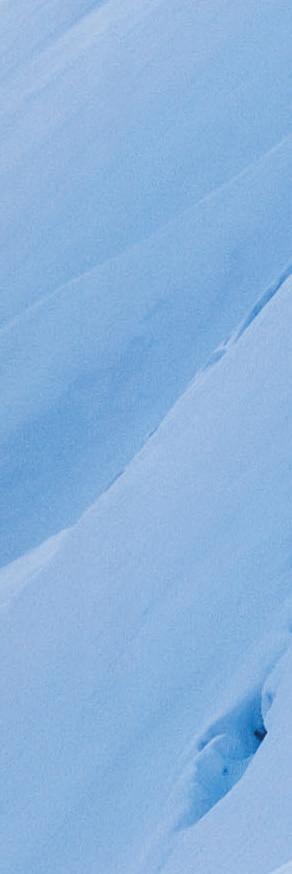

with Tomoki Fuse
The Guardians of Zao






Wandering Nagano's White World


The Seduction of Touring
Think Snow (Safety)





The Return to Japan
Kn ledge is P d ,Think Deep












85 WINTER 2023
ISSUE
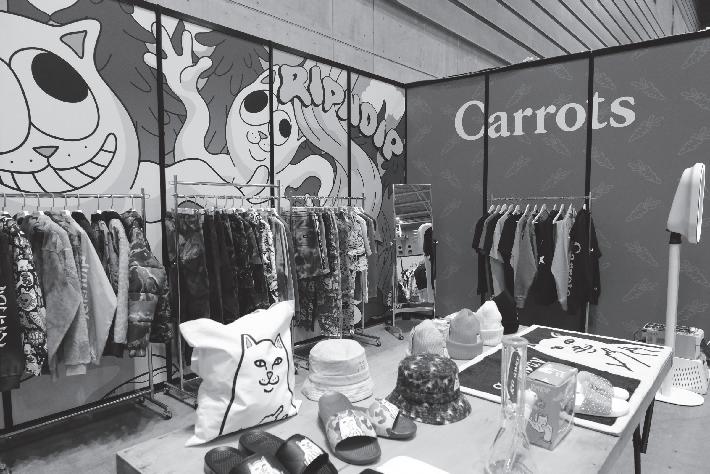



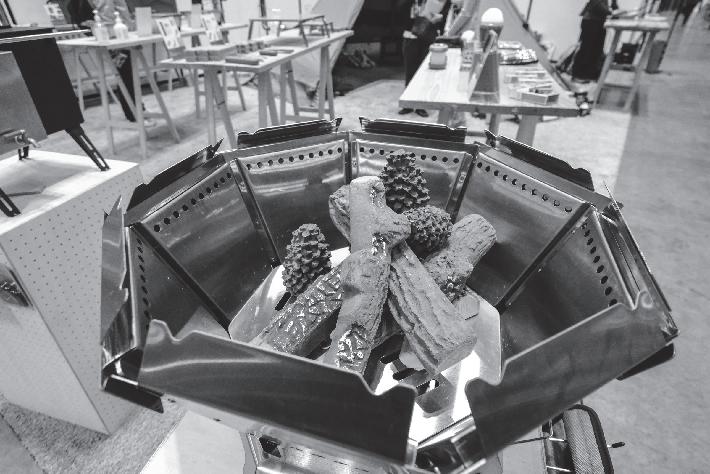





















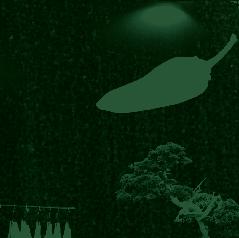
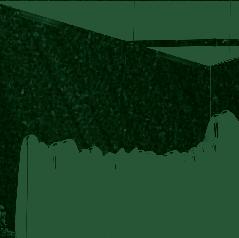
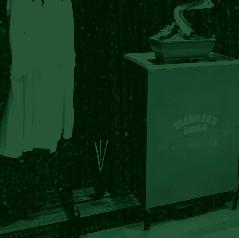
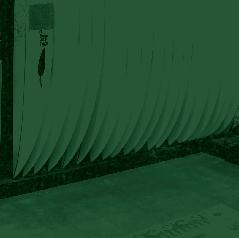




















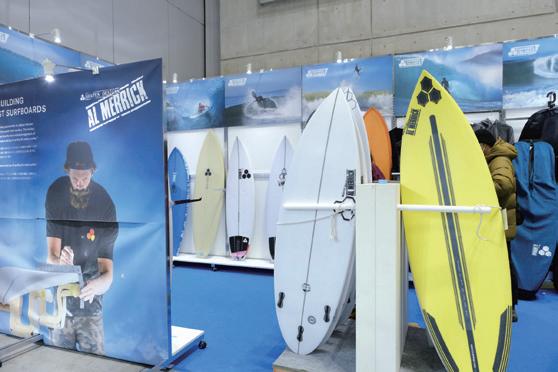
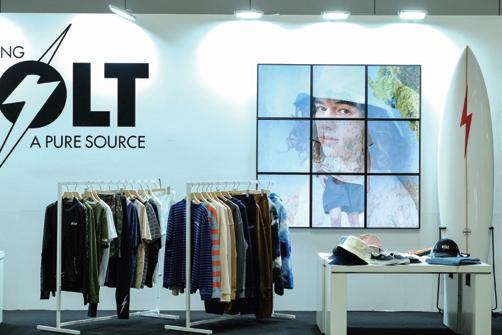

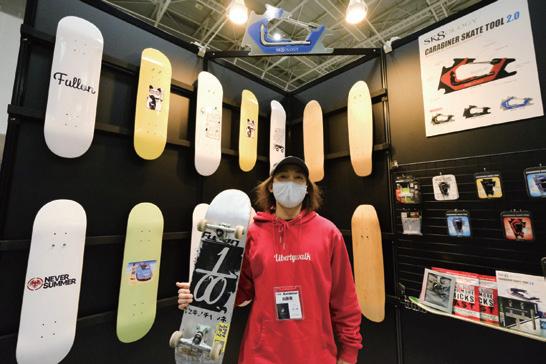
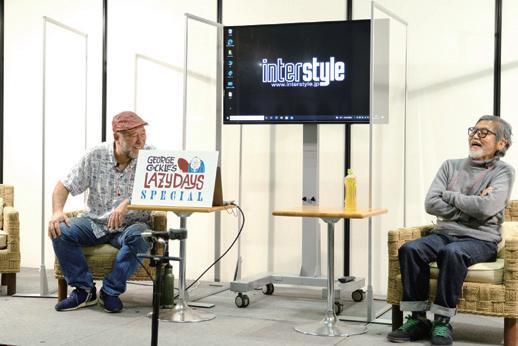

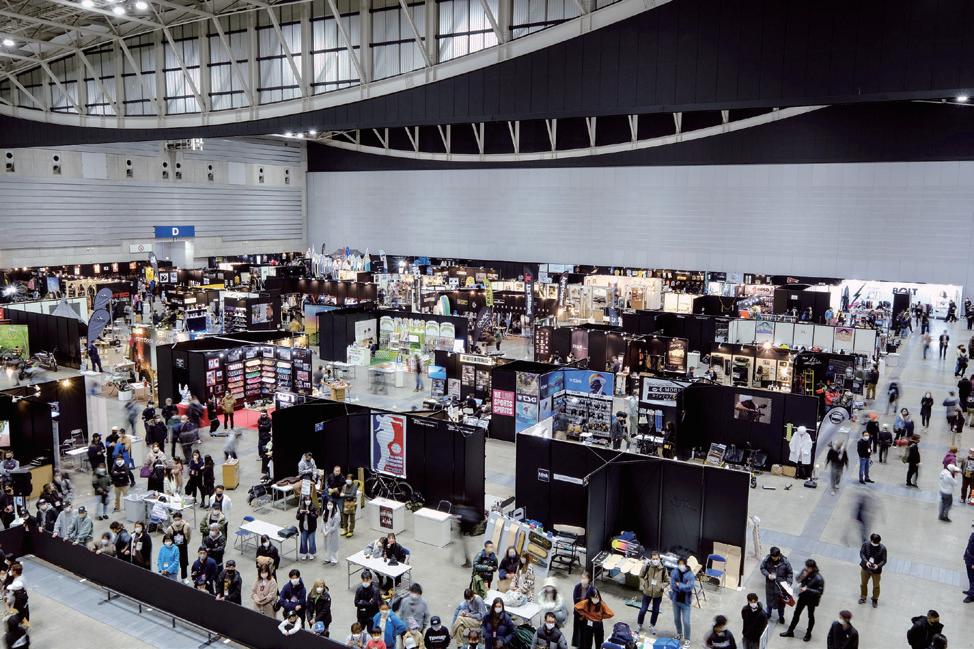









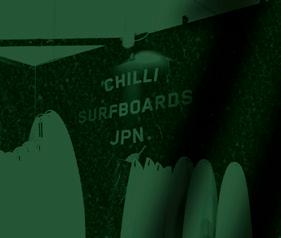
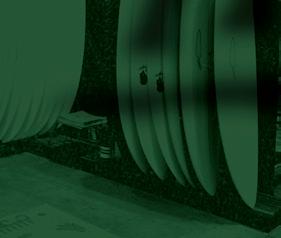









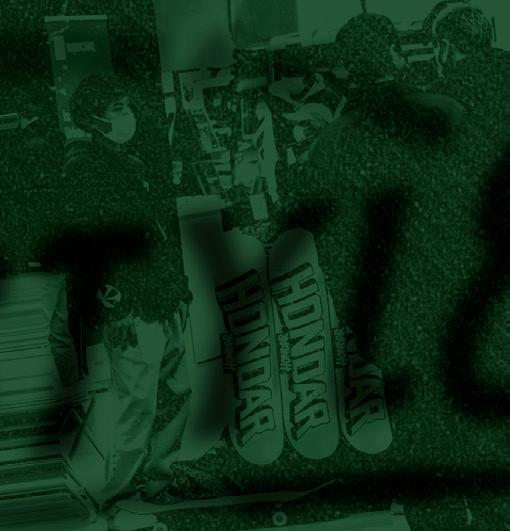














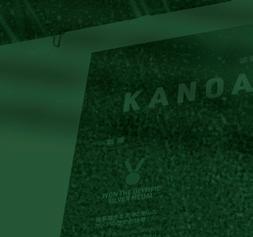











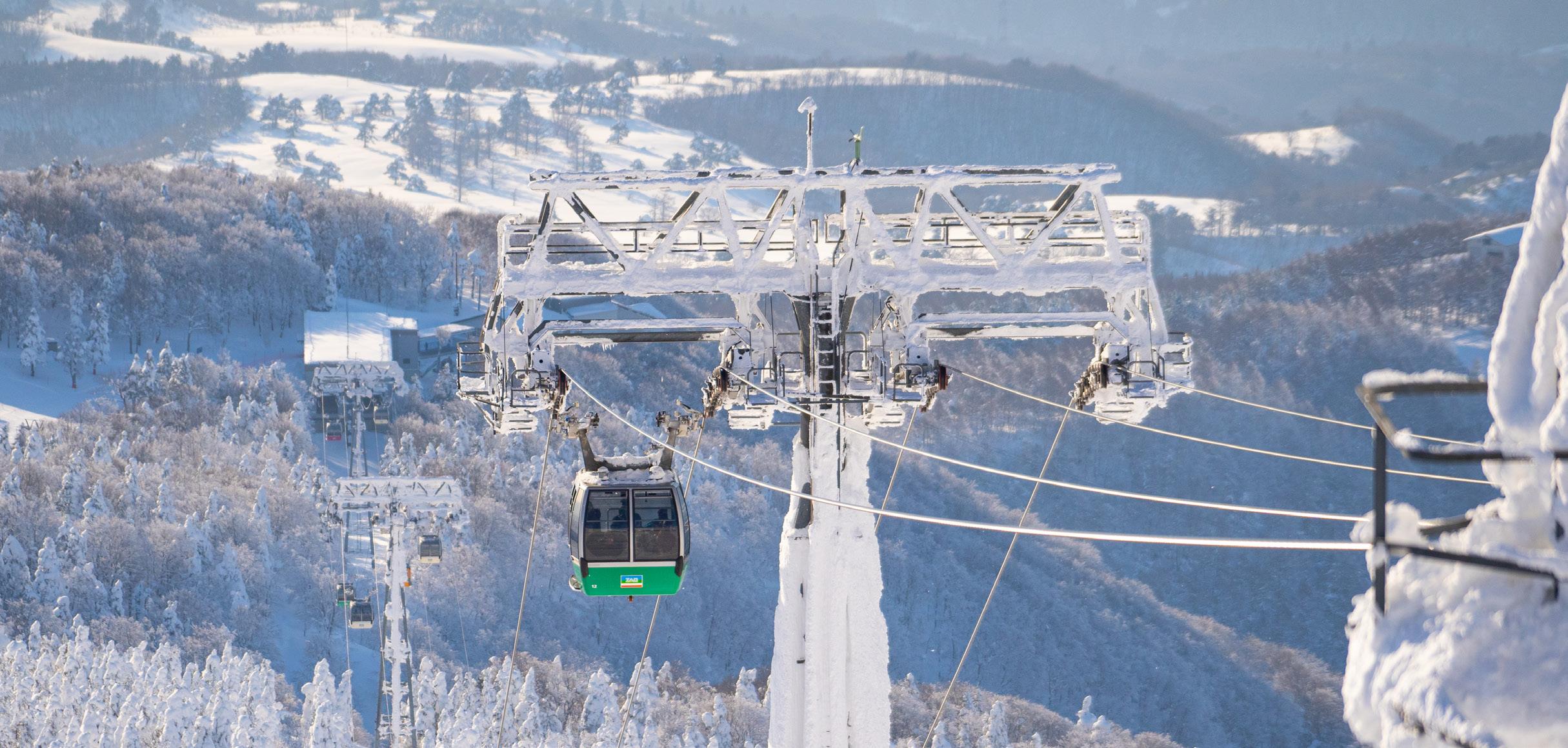
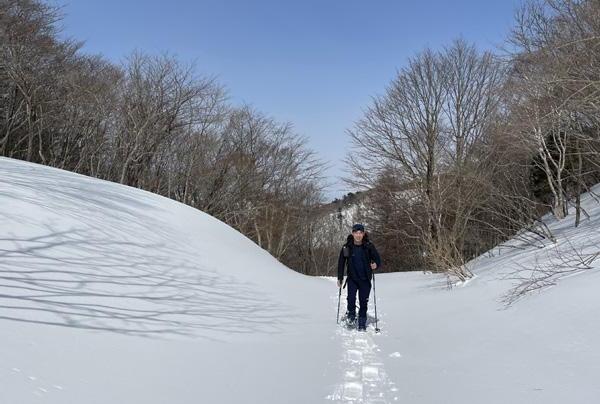
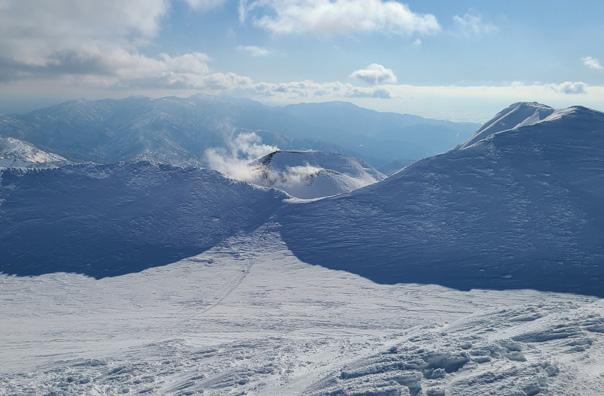
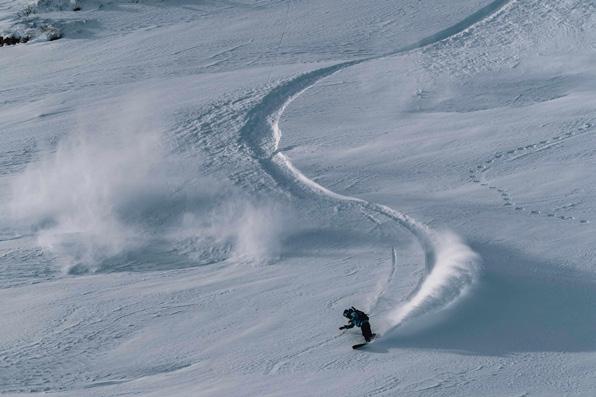

ISSUE 85 18 WINTER 2023 THE GUARDIANS OF ZAO From the Editor . . . . . . . . . . 4 Return to Japan . . . . . . . . . 12 Japan Snow Guide . . . . . . . 21 INSIDE 8 14 Wandering Nagano’s White World The Seduction of Touring Snow Surfing with Tomoki Fuse 10 6 Think Snow (Safety)
Published
PUBLISHER

Outdoor Japan G.K.
DIRECTORS
Mike Harris, Charles Odlin, Gardner Robinson
FOUNDER / EDITOR-IN-CHIEF
Gardner Robinson
MEDIA PRODUCER / EDITOR

Rie Miyoshi
CONTRIBUTING EDITOR
Bill Ross
CONTRIBUTORS
Quinlan Faris, Daniel Moore, Bill Ross, Derek Yamashita
DESIGN

Outdoor Japan
OUTDOOR JAPAN G.K.
45 Yubiso, Minakami-machi, Tone-gun, Gunma-ken 〒 379-1728
EDITORIAL INQUIRIES editor@outdoorjapan.com
VIDEO / MEDIA PRODUCTION media@outdoorjapan.com


SPONSORSHIP / PROMOTIONS media@outdoorjapan.com
B
Twenty-two years later, our mission of sharing the beauty of the people, places and natural environment of this great country hasn’t changed, however our platform and our media has. As online booking platforms evolved, we chose to stay true to our roots in story telling and content creation—still doggedly publishing our free magazine (now one of the longest consecutive English print magazines in Japan), but also evolving into web, social and video production to give our followers the content they want.
While we focus on telling the stories of people doing extraordinary things, there is still clearly a need to connect travelers with experienced, quality guides in Japan. Our friends at Kammui recently launched a great online platform and have carefully selected the best guides in Japan so that they can share their local knowledge with people wanting to get the most out of their travels. Many of these guides, expro athletes and lifestyle professionals have made their way into Outdoor Japan’s pages over the years; others are friends, but all have one thing in common—they are passionate about their craft and sharing it with their customers. We’re excited to share Kammui’s launch and we’ll be highlighting some of their guides in our “Guide Lines” series in TRAVELER magazine and Outdoor Japan Online in coming months. Our first spotlight is on pro-snowboarder and Hakuba-based backcountry guide Tomoki Fuse.
Japan’s backcountry is legendary, but with the rewards of some amazing lines down deep, untracked powder, comes risk. Outdoor Japan Editor, and Myoko Kogen guide, Bill Ross, sheds some light on the basics—and some of the pitfalls— to look out for before and during you head out to the backcountry, or side country, which can be equally as dangerous for the uninitiated.


Winter means skiing and snowboarding for most of us, but often overlooked is the simple pleasure of walking amongst the quiet solitude of snow-covered trees and mountain peaks. Shiga Kogen local, Daniel Moore, takes us out into Nagano’s stunning mountains while sharing the joy of wandering Japan’s frozen landscape, as well as the health and spiritual benefits snowshoeing can have on the soul.
Further north, Quinlan Faris lays out the seduction of touring Tohoku’s beautiful, uncrowded mountains, from stratovolcanoes to forested valleys. And Derek Yamashita introduces us to the famous juhyo (snow monsters) that stand guard high above the classic ski resort on Mt. Zao. In “The Return to Japan” we also highlight a talented group of pro skiers and snowboarders Outdoor Japan will be hosting this winter now that the border is open as they explore some of Tohoku’s top powder resorts. Be sure to follow along this winter @outdoorjapan.
@outdoorjapan
Cover Photo: Kammui
Robinson Editor-in-Chief
©2023 OUTDOOR JAPAN G.K. all rights reserved. Reproduction in whole or in part without written permission is prohibited. Views expressed herein are not necessarily those of OUTDOOR JAPAN G.K. Printed in Japan. AIRLINE PARTNERS Traveler magazine is available at selected lounges, reservations counters and in-flight libraries with the following airline partners. トラベラーマガジンは、空港ラウンジや予約カウンターや、右記航空会社インフライト・ライブラリーにてお読みいただけます。 —Gardner
4 | TRAVELER
DESTINATION MARKETING media@outdoorjapan.com Seasonally
From the Editor
4 | TRAVELER
Our winter issue also includes our annual Japan Snow Guide, which highlights some of the top ski resorts with opening times, lift ticket prices and other details to help you get out and get the most of your ski trips. If there’s something you are missing, jump on Outdoor Japan’s Facebook page and share your questions, comments and suggestions. Every season is a new adventure in Japan and winter is a great time to discover yours!
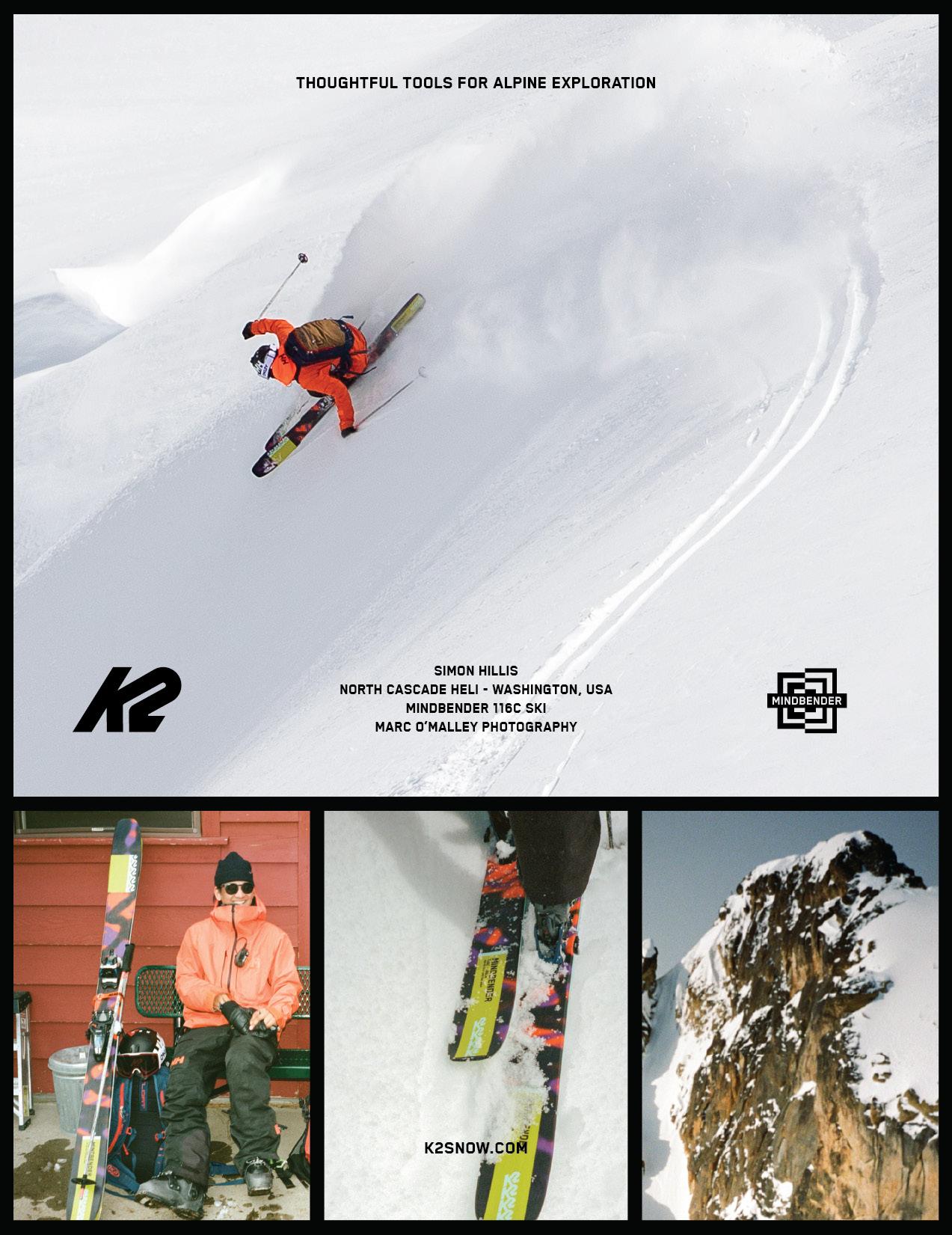
Think Snow (Safety)
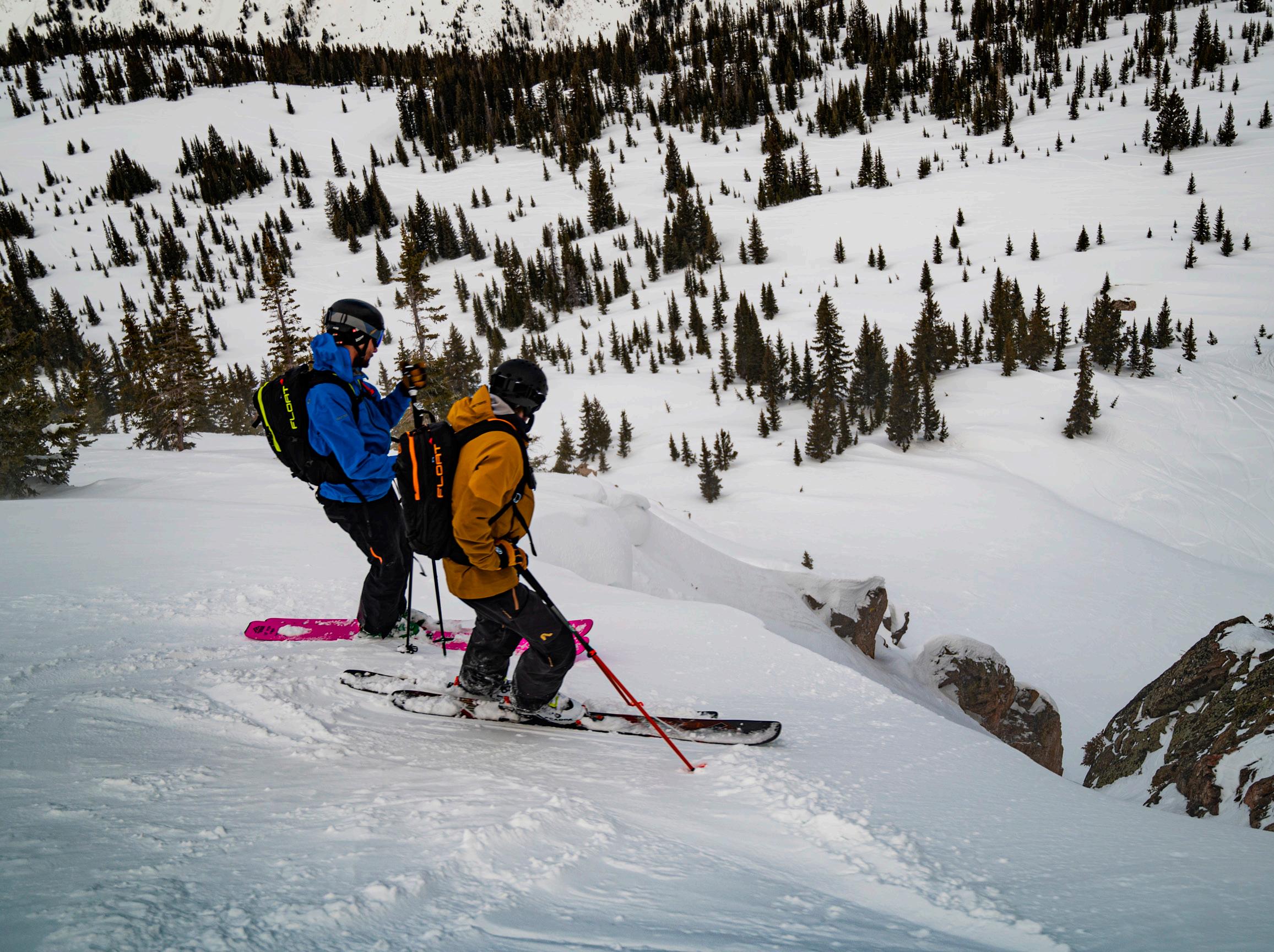 BY BILL ROSS
BY BILL ROSS
It’s the start of the season. You can’t wait for enough snow to either cover up the rocks (if you’re in alpine areas) or bend down the small trees and bury the grapevines in jungle-y places like Myoko Kogen. Powder fever is a dangerous thing. Too often, too many people charge out without really thinking about that shifting, fluid, beautiful and sometimes dangerous stuff known as snow.

6 | TRAVELER
Just strapping on an avalanche beacon, even as good as they are now, won’t make you safe. Making a decision based on data from digging a snowpit won’t ensure your safety either. Learning how to be safer out there in the snow is actually a lot of fun; teaching people how to think about their gear, the weather, the terrain and those around them is one of my favorite things to do in winter (next to actually skiing in the snow, of course).
Having a better awareness of the factors involved so you can safely enjoy the backcountry adds a lot to the whole experience of being out in nature. We can’t go over everything here in detail, but, perhaps, we can help you start thinking a bit more about what you’re doing when you are out in the backcountry.
Sidecountry is Backcountry
There’s something about proximity that gives people a false sense of security. If the ski area is close by, the snow must be safer, right? If you’re skiing sidecountry—straight from the lifts into the ungroomed, out-of-bounds areas—you’re in the backcountry. Most fatal sidecountry (AKA “slackcountry”) accidents have been right around resorts—someone hiking just a few hundred meters up, crossing a slope to get back to the resort, getting caught in a loose snow avalanche and then getting buried more than two meters down. Or a snowboarder just outside the resort crashing upside down in deep, unconsolidated new snow and not being able to get out. It happens every season.
I often thought about that last season as I did my daily snowpit check in back of our guide center. We do a foot penetration test—seeing how far one foot goes down when you step into the snow and put all your weight on it. Last year we had some epic snows, and doing the “foot pen” test often meant digging my way back out. The snow was so unsettled, so unconsolidated, so full of air it was seemingly bottomless as I’d go in up to my waist. That’s a hint that it might not be so smart to go out alone— or at all. Still, going sidecountry means you must have a transceiver, shovel and probe—and know how to use them.
Know thy Transceiver
Modern, digital, three-antenna avalanche beacons are amazing little units. All are compatible with each other, and, because they’re digital, many of them can have their firmware upgraded if an issue or improvement comes up. But the makers all approach things differently, so you have to know your device’s unique features. Many of them are full of special features—and I usually find that most people have no idea of how to use them.
Something like 85% of all avalanche accidents involve just one victim, but
there’s always a chance that several people might get caught in a slide. You have to be quick in finding that one victim, but you also need to know how your transceiver handles multiple burials. The only way is to read those instructions and practice often. Bury one unit and see how quickly you can find it. Bury it in different positions so the signals vary; put more than one unit in the snow. Practice enough so you can consistently find the beacons in seconds, not minutes.
Do the Dig
Shoveling is hard. If you practice well, your transceiver should get you to a victim quickly. Probing (there’s a pattern to probing) won’t take long. Shoveling is the most time-consuming, horrific, sweat-inducing part of the rescue. Practice this, too; look up strategic shoveling, and discover smart ways of efficiently moving a lot of snow, saving the diggers’ strength and successfully extracting and treating a victim. Then get a team together, put a probe down two meters and practice speed digging.

Know the World Around You
Just knowing yesterday’s weather isn’t enough in assessing today’s danger. You need to know what’s been happening over days or even weeks. Wind, sun, snowfall, temperature all play a part in creating potential weak layers in the snow. Knowing something that happened days ago, which could mean a problem in the snow, is important intel to have. Again, doing a daily study plot has been very helpful for my operations—what we see at the base usually translates to things we can predict on the hill.
Having that background on the current snowpack is extremely helpful in deciding if you should even go out. If you have no information and just head up the slope to dig a pit for a compression test, you might discover what I did once early on in my backcountry days—that you’re in the middle of a steep slope and the test shows the snow is ready to slide at any second. Now you’re trying to figure how to get off the hill without getting yourself buried.
Get out and check the terrain a lot, too. Every year I see someone climbing up a valley underneath huge overhanging cornices. This takes some studying, too, but ask the locals as well—if someone asks me about terrain and safety, I’m not going to hold back on the information (ask me the best place to ride, though, and you might get some disinformation).
Reject Peer Pressure
During two rescues here in the Myoko backcountry last winter, there was one
common theme: people had a schedule. And the schedule was more important than the conditions. A rainy, windy day with terrible visibility, and a woman went off the back of a ridge. High winds and cold weather resulted in a huge, weak cornice that the guy went out onto, then tumbled to the bottom of the valley when it collapsed.
You have to be able to say “no” when the conditions just aren’t right. Most often there’s a lower, flatter slope where you can still have fun—a nice powdery, but safe, ride through the trees. Maybe it’s just goofing around on the groomers (and you really could improve those turns, right?). Group pressure can be a terrible thing, either from an over-ambitious leader (so many accidents year-round in Japan are because of this) or a noisy, aggressive group member, who’s usually not very technically proficient, seems to be the rule. It’s hard to be the naysayer, but it’s better to see another day than to pay for the rescue efforts, which are not cheap in Japan—or something even worse.
The powder will come again, and there will always be an almost-perfect day to enjoy it. v
About the Author
Bill Ross is CAA Level 1 certified, a BCA Pro Advisory Guide, K2 Japan Guide Team rider and a founding member and Vice-Chairman of the Myoko search and rescue organization. He guides and provides snow safety instruction, including for the Freeride World Tour, from his base in Myoko. He and his teams also regularly hold training sessions and guide in the mountains around Myoko Kogen. To learn more, visit dancingsnow.com
Winter 2022 | 7
2023 | 7
WANDERING
Nagano’s White World
Nagano is known as a powder paradise for skiers and snowboarders, but it’s also nirvana for snowshoeing—for those looking to experience the winter landscape at a more relaxing pace while soaking in the sights, sounds and serenity of the season.


Imagine you are deep in the woods in a white, wintry landscape. The leaves are long gone from the trees, and the branches reach up toward the sky like skinny arms. You have entered a black-and-white painting, you notice things you never paid attention to. The shape of snowflakes, the wind rustling the trees, the drip-drip of icicles melting. The change from Japan's vibrant green summer and nostalgic autumn colors is stark, but this white world is stunning.
The trees occasionally release snowballs from their branches in thunderous bursts. The glittering diamond powder in their wake catches the sunlight as it drifts down.
Sometimes it seems the trees are aiming for you. Snow absorbs sound, so the surroundings are noticeably quieter, except for an occasional bird chirping and the crunch of feet sinking into the snow with each step. You inhale icy cold, clean air into your lungs and breathe out white mist, basking in the glorious warmth of the light. It's getting darker and colder, but the hot bath and cold beer waiting at the ryokan provides plenty of motivation.
Snowshoeing is magic. It is an endeavor where every step on fresh powder is where none has tread before. It provides the freedom to explore in a setting inaccessible to skiers, snowboarders or hikers. It is also a great alternative to these activities, a way to reset, rest sore muscles or explore the mountains in spring when the snow is too slushy for skiing.
It is also accessible for those with various physical abilities. Some people want to take a quick walk around the forest, bring sleds or have a snowball fight. Other serious hikers can summit a mountain or ride otherwise inaccessible winter terrain. Northern Nagano's snowy, hilly landscape offers almost limitless snowshoe options for those who know where to venture. Snowshoeing is worth checking out on your next adventure to Japan's snow country.
BY DANIEL MOORE
Then and Now
Snowshoeing began as a practical way for indigenous peoples to move across snowy landscapes. Nowadays, technology has advanced, but the fundamentals remain the same. A broad surface prevents snowshoers from sinking into the snow, and spikes underneath provide traction when ascending or descending. Backcountry snowboarders who strap their snowboards on their backs also snowshoe up while climbing mountains and riding down untracked terrain.
The Basics
Before you go, remember some basics to make the most of your snowshoeing experience:
1. Hire a guide in unfamiliar terrain. Guides take you to the most interesting or exciting accessible snowshoe areas matched to your ability level. Winter landscapes present serious safety concerns, including avalanches, streams or holes under the snow, hypothermia and frigid weather. Hire a guide the first few times to enjoy the experience while remaining safe.
2. Use good gear. Cheap snowshoes slide around, are challenging to strap on and break. Rent or buy high-quality snowshoes and gear. You will not regret it. I recommend the brand MSR for anything snowshoe related.
3. Bring the right gear. Winter weather changes rapidly, and you need equipment for all conditions. Snowshoeing can be hard work, so you might sweat while ascending, then get chilly while descending. Bring or wear several layers under your jacket. Bring long underwear, two sets
8 | TRAVELER
of gloves, a hat, sunglasses (the snow is bright), sunscreen, snow boots, two pairs of socks, food, water and hiking poles with snow baskets. 4. Stay within your limits. People get into trouble when they push the boundaries and get overly ambitious. Snowshoeing is tiring and different from other physical activities so ease into it.
SNOWSHOE SPOTLIGHTS


Togakushi
Nagano’s “Hidden Door” is Perfect for Snowshoeing. Togakushi is a national park and collection of Shinto shrines located above Nagano City. It is famous for its buckwheat noodles, Togakure-style ninjas, and stunning natural setting with an abundance of snow. Starting from Okusha Shrine, there is a network of trails that lead to ancient cedar-lined avenues, open forests, views of Mt. Togakushi, lakes and streams. Unless it has just snowed, there are usually other peoples' cross-country ski or snowshoe trails to follow. Togakushi is around 1,200 meters above sea level and can reach temperatures under -10C. So make sure to bring warm gear for cold conditions. Togakushi's combination of spiritual and natural elements makes it a profound experience.
Rentals and Tours: Kotori no Mori in Togakushi offers snowshoe and equipment rentals. The owner also provides snowshoe guiding—in Japanese only— as is their website at kotorinomori.jp . Guest House Lamp in Shinanomachi offers English-speaking Togakushi snowshoe tours. Visit go-nagano.net/en/ experience/id=19220
Nabekura Kogen

Nabekura Kogen is one of the snowiest places in Japan, making it an excellent place for snowshoeing. Located at the base of the Seki mountain range, the forests and wide open fields used to grow vegetables in the summer offer a unique snowshoeing experience. Unplowed roads with telephone poles visible even in the winter make it harder to get lost. Cozy up with a cup of coffee or herbal tea at Nabekura Kogen Mori no Ie when finished.
Rentals and Tours: Visit the Nabekura Kogen Mori no Ie website for details nabekura.net
My Secret Stash
Although there are popular destinations that attract snowshoers, my favorite places remain secret spots I have discovered over the years. I have one remote area in the forest where I have never seen anyone else snowshoeing. Sometimes I go by myself to exercise, think, drink some hot chocolate and get away from the bustle of life. It's my little secret paradise and there are special places in the mountains waiting for you to discover them. I never stop exploring because I know many more hidden spots are out there.
That's the beauty of snowshoeing compared to any other activities—there is always a new path to walk because the options are limitless. It is an ideal way to slow down, reflect and come away with renewed energy. Finishing off a day snowshoeing in the mountains with a hot spring bath and a sake, beer or your favorite beverage is tough to beat. v
ABOUT THE AUTHOR
Daniel Moore moved to Japan when he was seven months old where his father attended graduate school. He grew up immersed in Japanese society and culture in Tokyo and Nagano, attending Japanese elementary and middle schools. After graduating from Azusa Pacific University, where he played collegiate tennis, he traveled to Kenya selling fuel-efficient cookstoves in Nairobi. He’s been wandering ever since, traveling to more than 50 countries and guiding pickle ball trips around the globe (he's won multiple U.S. national championships) and promotes the growing sport in Japan. He lives near Shiga Kogen's famous snow monkeys and runs an AirBnB as well as Active Travel Japan, a company he started to share his knowledge with travelers and take them to place they can't find on their own.
Winter 2022 | 9
THE Seduction of Touring
BY QUINLAN FARIS
It’s a perfect Friday in early February. The sky is blue and there’s not much wind. While it’s a normal workday for most, there’s a steady trickle people climbing a cluster of mountains in Akita called Akita Komagatake (秋田駒ヶ 岳) or “Akikoma" for short. Some are wearing snowshoes with snowboards strapped to their backpacks, but most are in touring skis fitted with skins, allowing them the traction to hike up the slope toward the central volcano. This is winter touring in northern Japan, a seductive mistress that will lure you back for more.


Hiking trails in Japan generally have official “mountain opening” dates when ceremonies are held and services begin at the mountain lodges along the trails. For example, both Mt. Fuji and Mt. Iwate open on July 1, and a lot of people in Japan mistakenly assume that you’re not allowed to hike during the off season, but that is simply not the case. While winter excursions require different skills, equipment and entail some risk, many venture into the snowy mountains of the north on skis or snowshoes every year.
Akita Komagatake is an area of active stratovolcanoes just 10 kilometers east of Lake Tazawa in Akita. The highest summit is called Onamedake ( 女男岳 ), which translates to “Mistress Mountain.” The local story goes that Odake ( 男 岳 ), or “Man Mountain,” was having an affair with the temptress, Onamedake, despite his marriage to Medake ( 女岳 ), which literally translates to “Woman Mountain.” As a result, Medake has erupted in anger many times, most recently in 1971, and is still smoking mad now. This kind of volcanic love triangle is actually not so rare in Japan, and there are similar stories involving other mountains.
During the green season, you can hike the area via a trailhead at Kunimi Hot Springs or even take a bus up to the 8th Station lodge from the Akita side. But in winter, the roads leading to these trailheads are closed and completely covered in snow.

Backcountry skiing, or ski touring, has gained a lot of popularity in Japan over the last few decades. It can be intimidating or scary if you’re new to it. The risk of avalanches or just simply getting lost on a snowy mountain is real. Still, going with a small group that has the necessary equipment can be glorious, even for people that are just starting to venture into the backcountry.
To experience Akikoma during the winter, start at Alpa Komakusa, a facility near Lake Tazawa that has both a hot spring bath and visitor center. Other than right after a fresh snowfall, there’s always a clear track where
powder enthusiasts begin the roughly three-hour ascent to the summit of Onamedake (1,637 meters). The first two hours are more or less a straight shot up to the 8th Station lodge, the bottom story of which will be completely buried in snow. However, there’s a door you can enter though on the 2nd floor that gives you access to the bathrooms. There’s also a spacious room with tables you could use to eat—but why would you want to eat inside when you’re surrounded by snowy mountains and frost-covered trees?
On any bluebird day there’ll be a dozen or more people relaxing here before or after their trip up to the summit area, composed both of locals and people from all over Japan. It’s always a festive atmosphere, and people are quick to smile and share information about other snowy peaks they’ve explored.
The last leg of the trip is a steeper ascent to the plateau right below the summit of Onamedake. What most people do is make a sort of base camp here, zip up to the summit, ride down, and repeat! There’s a super wide area, with a completely smooth clear slope to ride down without a tree in sight, so you can enjoy fresh powder even if you’re not one of the first up.
I must admit I snowshoed the route for a few years before I worked up the confidence to do it on skis. But once you get used to the glorious ride down, you’ll never want to trudge back in snowshoes again. Based on the years I’ve spent exploring the mountains of north Japan, I

really think Akita Komagatake is both the perfect training ground for people just getting used to touring, and a gorgeous play area for more experienced powder hounds. (There are some very steep, sketchy slopes on the other side of the mountain that provide excitement for those with advanced skills, but I’m not there yet. Be sure to know your limitations of skill and knowledge in the backcountry and go with a friend or small group.)
In addition to the stunning alpine landscape, which even boasts a small area of snow monsters just below the 8th Station, another plus for novice backcountry skiers is that the terrain ascends all the way up without any dips into valleys, meaning you don’t have to take off and put back on skins multiple times or fiddle with your bindings. And the way back is all smooth sailing downhill, no awkward sideways slope climbing on skis or stopping to put your skins back on for a short ascent. It’s perfect.
Of course this entire area is also a great snowshoe hike, albeit a long one. When you have to walk all the way back down, it can easily be a six-hour round trip. It is absolutely worth it though. And if you have any luck, you’ll make friends along the way—maybe even get invited up to one of the other glorious mountains nearby, like Moriyoshi or Hakkoda. Akita Komagatake may very well be the gateway drug to a backcountry addiction. Once you’ve started, Tohoku is full of dreamy mountains where you can get your fix! v
About the Author
Quinlan Faris has been living in Japan for more than 20 years, the last 12 in the wilds of the north. He is based in Morioka, Iwate, where he wears a variety of hats—working as a guide, inbound tourism advisor, narrator, and video creator—all while running a small Airbnb out of the building where he lives. You’ll most likely find him up a local volcano, hiking through a storm or foraging for wild edibles along a mountain stream to feed his guests or entertain his YouTube subscribers. Follow his adventures at youtube.com/c/ GoNorthJapan and Instagram @quinlan
Winter 2023 | 11
Winter 2023 |
The Return to Japan
The past several years have been challenging for everyone. For travelers it’s been frustrating, especially so for those accustomed to chasing winter storms around the globe. Over the last decade, Japan has risen to the top of the wish list for powder hunters keeping a watchful eye on Siberian storms that crash into Japan’s mountains leaving deep powder behind. Beyond the snow, the rich culture, unique traditions—coupled with the amazing hospitality and delicious food—just add to the draw. Unfortunately during the pandemic Japan had some of the tightest border restrictions meaning the outside world was locked out–until now.
Before the Covid curtain closed inbound tourism to Japan, Snowledge founder, Eric Lee O’Brien, had been working with Outdoor Japan to bring his Snowledge App to Japan as well as some top ski and snowboard athletes over to explore some lesser known mountains and resorts.

Travelers and the travel industry in Japan were impatiently waiting for an official announcement that travel restrictions would ease, and in October 2022 it finally came. It just so happened Outdoor Japan was working with Tohoku Tourism to showcase some great resorts in Northern Honshu and the stars aligned to bring the Snowledge team over to hit some of northern Japan’s deepest terrain.
O’Brien, a free skier who competes on the Freeride World Tour, has brought together an all-star crew of skiers, snowboarders, filmmakers and storytellers to capture and share the essence of what makes Japan such a special winter destination. In Eric’s words, “Return to Japan will be a pow-

filled skiing and snowboarding film highlighting a return to the cultural experiences and some of the lesser known corners of Japan’s mountains reopening for the first time in years.”
His crew includes fellow Freeride World Tour athletes Audrey Hebert (Canada, Snowboard) and Brian Stenerson (USA, Snowboard), as well as American Skier—and Skida founder—Corinne Prevot, plus award-winning Australian filmmaker Sam Levings to capture all the action.
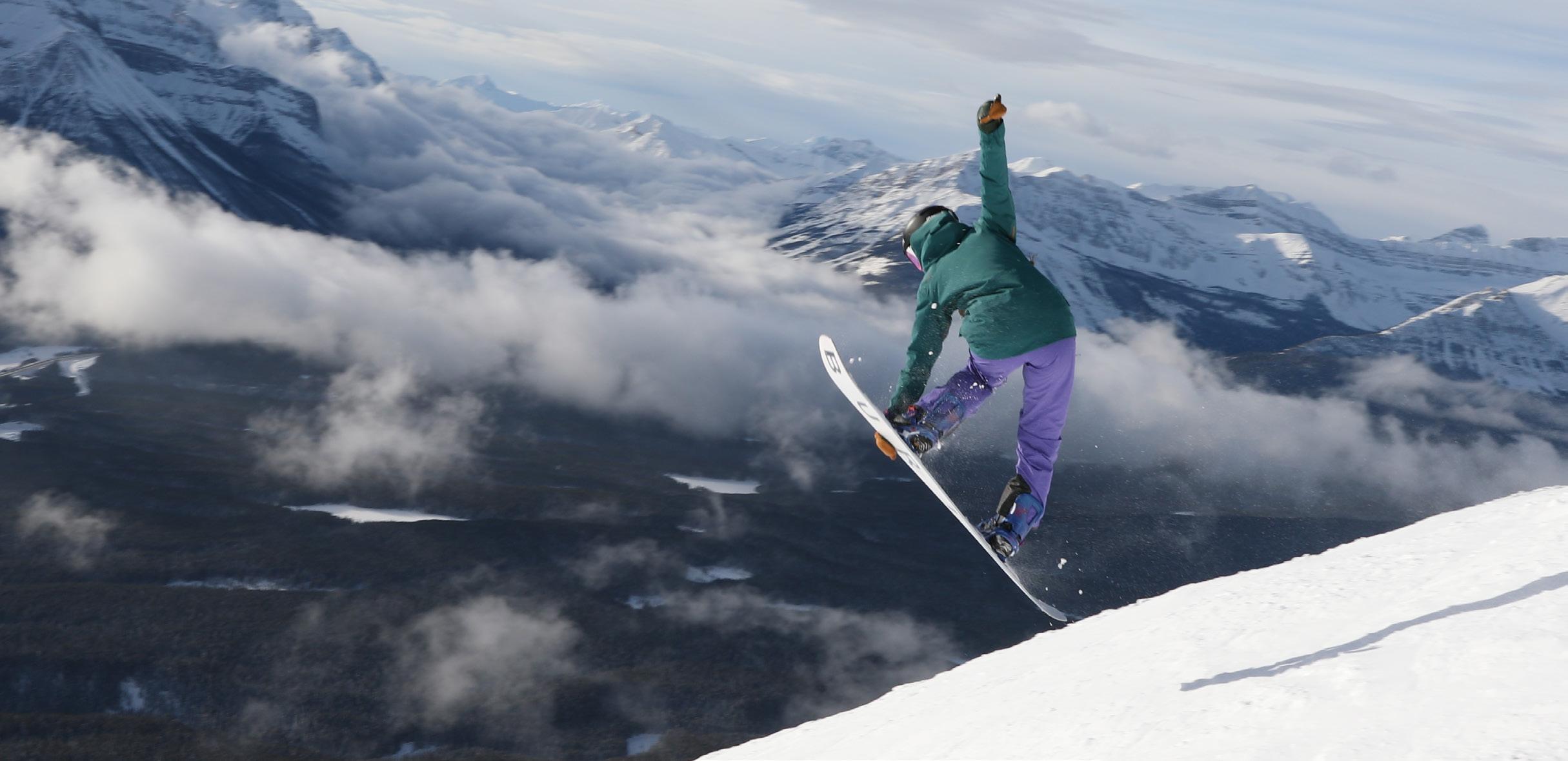
This year’s project will take the crew to some of the best powder zones in Tohoku, as well as the Hokushin Region of Nagano, home to the traditional Olympic ski and hot spring village of Nozawa Onsen, nearby powder resorts Madarao and Myoko and finally over to Hakuba’s peaks for the Freeride World Tour stop. They will be posting on their socials, so follow their adventures and keep an eye out @outdoorjapan for updates from Jan. 18 onward.
Eric Lee O’Brien | @ericleeobrien
4FRNT | TREW | Hestra | POC
Audrey Hebert | @audreysnowclimb
TREW | Hestra | UNLTD | Swix
Brian Stenerson | @instasteny
Weston | TREW | Zeal | Pret
Corinne Prevot | @krinster
Skida | 4FRNT
Eric Lee O’Brien
Audrey Hebert
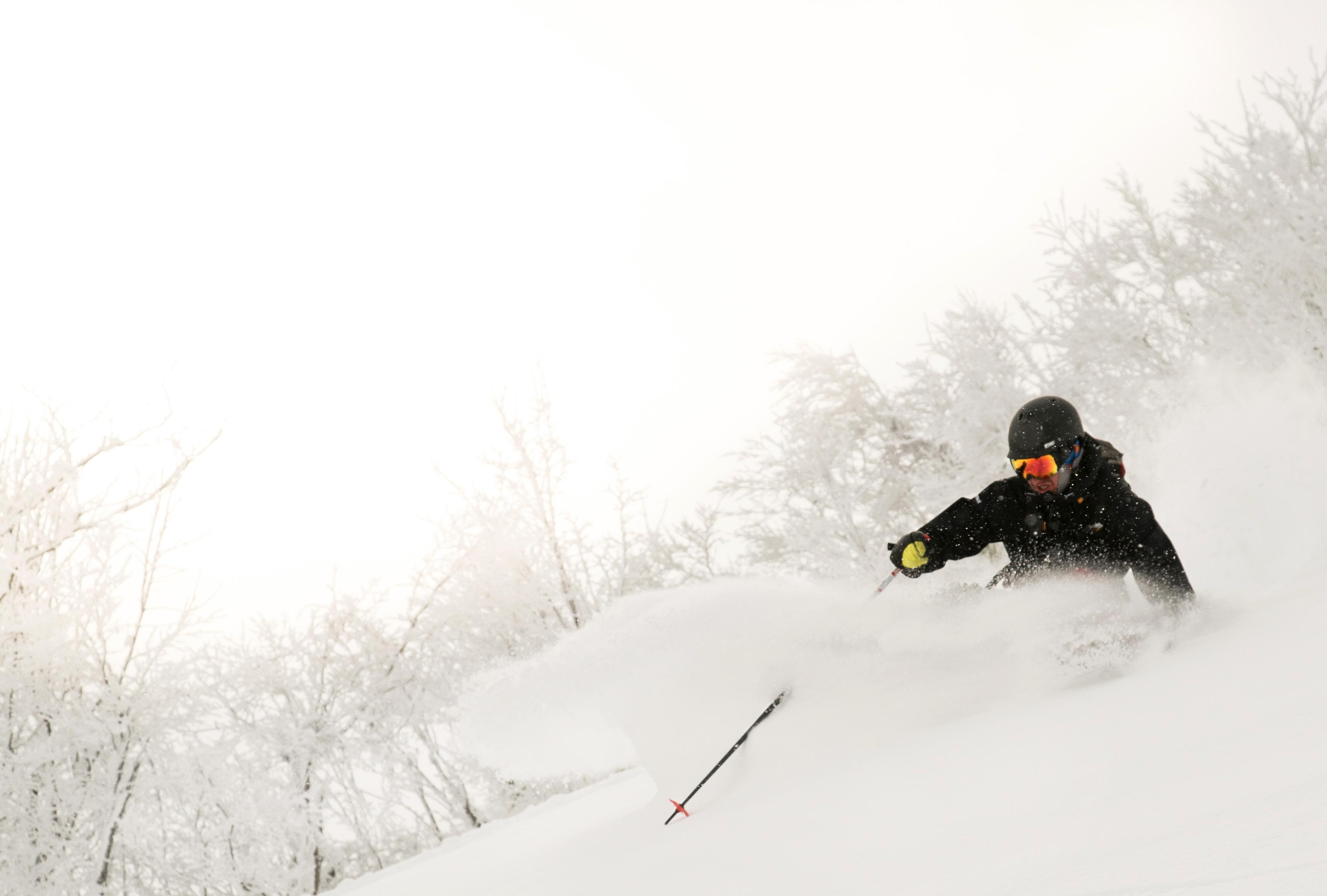


Winter 2023 | 13 15 | TRAVELER Madarao Kogen Hotel & Ski Resort www.madarao.jp/en
Japan’s Biggest Mountains SnowSurfing
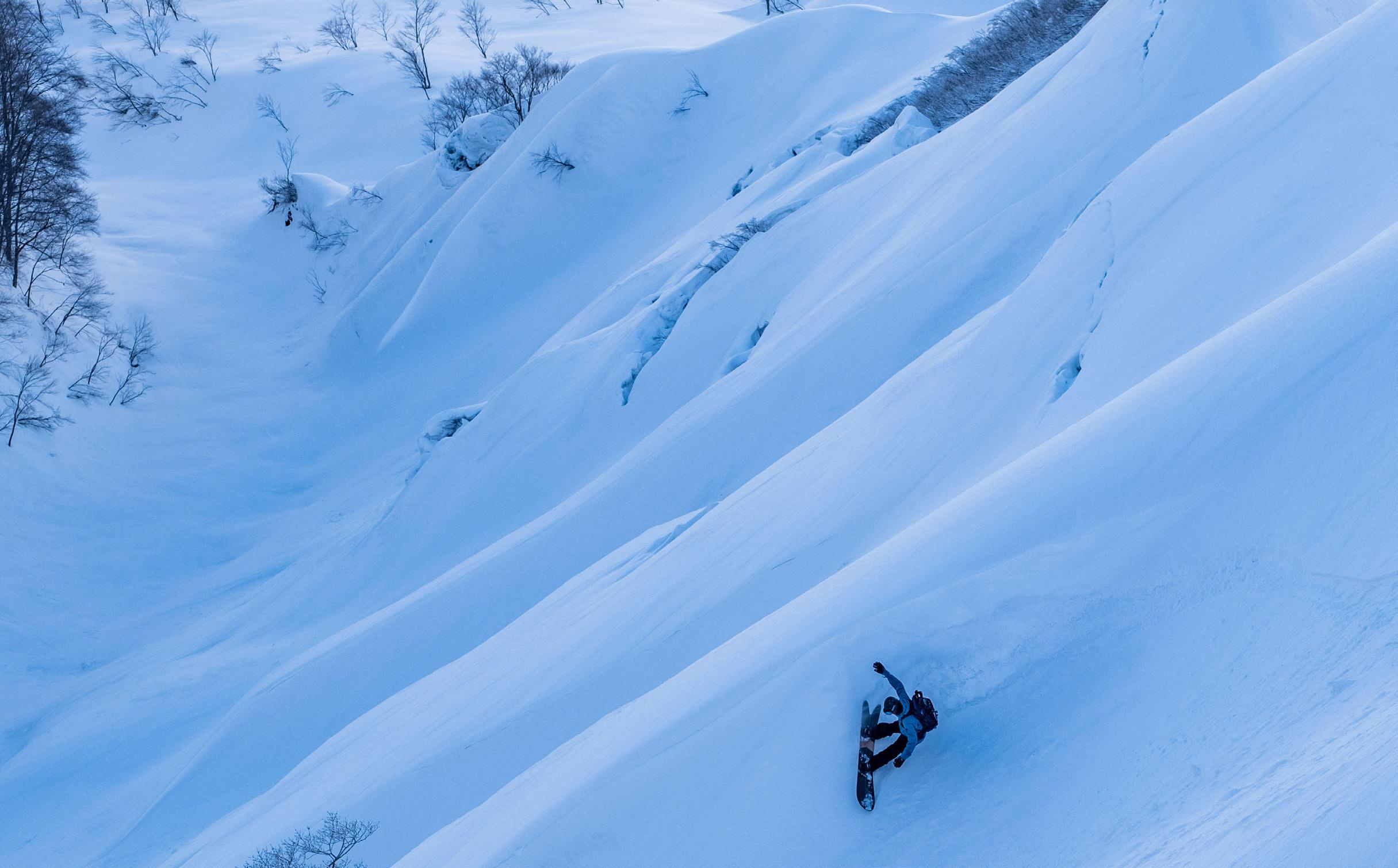

Tokyo native Tomoki Fuse left one of the world’s largest cities for some of Japan’s highest mountains. He’s now firmly established in the big mountain resort of Hakuba in Nagano Prefecture. After many years of guiding and building his backcountry credentials, he recently established his guiding company, Snowsurf Hakuba to share his love for the mountains. He talks about why he chose the Northern Alps as his base, and his approach to safely taking guests out into Japan’s backcountry.
 INTERVIEW WITH TOMOKI FUSE WITH BILL ROSS PHOTOS COURTESY OF KAMMUI
INTERVIEW WITH TOMOKI FUSE WITH BILL ROSS PHOTOS COURTESY OF KAMMUI
Tell me about your history in Hakuba.
I first moved up here about 13 years ago. I really liked backcountry skiing and riding, and this seemed like the place to do it. About 11 years ago a local guide company asked if I wanted to help them out, so I started out as a tail guide on tours. I did that for a few years—it kept getting more interesting—so I decided to get training and certification so I could become a real guide.
What is special about Hakuba?
It’s just such a vast area, with so many choices. These are the biggest, steepest mountains in all of Japan—I don’t think there’s anywhere else that has the same alpine feeling as Hakuba. It’s the best in Japan, I think; there’s no other place like it. The risks are higher, of course, but there are also so many more options. If you have a nice, sunny day and the snow condition is good, there are huge open slopes to enjoy. If it’s snowy or cloudy, we can go ski in the trees.
What makes for a perfect day in the Hakuba backcountry?

That’s easy—good conditions, good snow and a good slope—it’s going to be a fun day when you have all three.
Do you only guide in Hakuba?
Basically, yes, just here. But if I get a request for another area, I will go to other mountains too. In spring I’ll be in Tateyama for much of the late season. I was there in November of this year, too—there was so little snow. It was a lot of bouncing off rocks! But I’m pretty happy just guiding in Hakuba, because there’s so much terrain to choose from.
Tell us a bit about your approach to guiding.
Basically I guide alone, but have good tail guides I can call on for large groups. I’ll only take up to six people if I’m alone, 12 if we have two guides. Generally, the groups tend to be about five or six people.
Mainly I’m a snowboarder, but I ski, too, so both skiers and boarders can join in on our tours. I have a sort of “normal” course for people with backcountry experience where we head to a variety of terrain. I also have a beginner course for people who are just getting into backcountry. For this we start by going over how to use avalanche beacons and gear before we go out to a course that’s good for first-timers.
What is a tour day like?
The group gathers in the morning, and we go over the conditions and the course with the guests before heading out to the area for the day. It gives us a good chance to make sure everybody has the right gear and is ready to go.
Why is your company called Snowsurf Hakuba?
I surf as well as snowboard and ski. The name conveys my love of surfing on snow as well as water, enjoying the glide and the natural surroundings. v

GUIDE LINES
Winter 2023 | 15
TOMOKI FUSE CREDENTIALS
• JMGA Ski Guide Qualification Level II
• JMGA Climbing Guide Qualification Level II
• Shinshu Mountaineering Guide
• JAN Avalanche Worker Level 1
To learn more about Tomoki Fuse’s backcountry tours, and to book for this winter, visit kammui.com/en/winter



INTRODUCING JAPAN’S BEST GUIDES
When entrepreneur Max Mackee returned to Japan after studying in London, he found some inspiration in Japan’s mountains after spending time with knowledgeable local guides like Tomoki Fuse; people passionate about sharing their local knowledge and local mountains but there wasn’t really good forum for presenting themselves.
“I met many guides who taught me about things such as dealing with avalanche risk, and had so many experiences that impressed me with their outlook on life,” he says. “I felt that there wasn’t a place where the guides could really introduce themselves, and that’s why I decided to create Kammui,” he says.
Kammui is an Ainu word meaning “spirit.” One of Mackee’s ideas (as a passionate backcountry snowboarder himself) is that the connection with nature is part of our spiritual side, and a key to our well-being.



“Our mission is to create the optimal pathways for people to get back to nature,” he says, “which then leads to health, spirituality and sustainability.” By providing an engaging showcase to the best guides in Japan,” he adds, “people can find pathways to the guides and experiences easier, which in turn ensures that guides can connect with more customers and build a sustainable income."
Kammui was initially launched in Japanese, but there is an increasing number of pages in English featuring guides covering a wide range of seasonal outdoor activities in beautiful natural areas all over Japan. To find out more visit kammui.com/en/
Winter 2023 | 17
GUIDE LINES Winter
The Guardians of Zao
BY DEREK YAMASHITA

As winter enters into its deepest months of January, a natural phenomenon takes place on the slopes of Mt. Zao. Massive white pillars form across the winter landscape like frozen soldiers guarding a sacred fortress. They are known as “ juhyo” or “snow monsters” and their presence near the peak of Mt. Zao announces to all the height of winter is upon us.


Arare blend of moist air—driven by frigid Siberian winds—batters the upper alpine region of Mt. Zao each winter. The needles of the fir trees, called Aomori Todomatsu or Maries Fir, capture the moisture from these icy winds, freeze over and and then act like natural magnets for the heavy snow that blankets the area. This cycle repeats over the winter building layer upon layer of snow and ice, creating countless imposing figures across the high mountain slopes until Zao’s snow monsters have risen once again.
The snow monsters share the mountain with the Zao Onsen Ski Resort, which features a vast ski network of terrain boasting some of the best powder in the world. “Zao is a classic Japanese ski resort, better suited to skiers who can traverse the many courses without having to take off skis,” says local resident and ex-ski racer Mao Oshima. “Its a bit harder to get around some courses for snowboarders as there are a few flat sections.”

Oshima has skied all over Japan as well as to many ski resorts around the world during her racing career. She notes there aren’t many resorts that can rival Zao’s size and the stunning views, as well as the unique opportunity to ski or snowboard among the juhyo. Her family opened Lodge Scole, the first European-style lodge in Zao, back in 1973 and still own and operate it today.
“You can enjoy great views of the mountain from the village, but Zao is also a classic hot spring town,” Oshima adds. “You can smell the sulfur while wandering around and exploring the village.”
Depending on your skill and sense of adventure, there are various ways to interact with the snow monsters. Skiers and snowboarders can enjoy a close up view while hitting the slopes—even at night with a torch in hand when they are illuminated with a magical tinge of color, creating a surreal atmosphere.



Whether you are skiing or just enjoying the view, the Zao Ropeway is a great way to see the local celebrities from above, and, as you get to the end of the ropeway, you are greeted with a view of the lit up snow monsters from the comfort and warmth of the lodge. For those wanting a bit more adventure— but still like to stay warm—the "Fantasy Corridor Tour” is a nice option that takes place halfway up the ropeway. Guests can jump in the “The Night Cruiser” for a heated ride in this massive snow vehicle through the illuminated monsters.
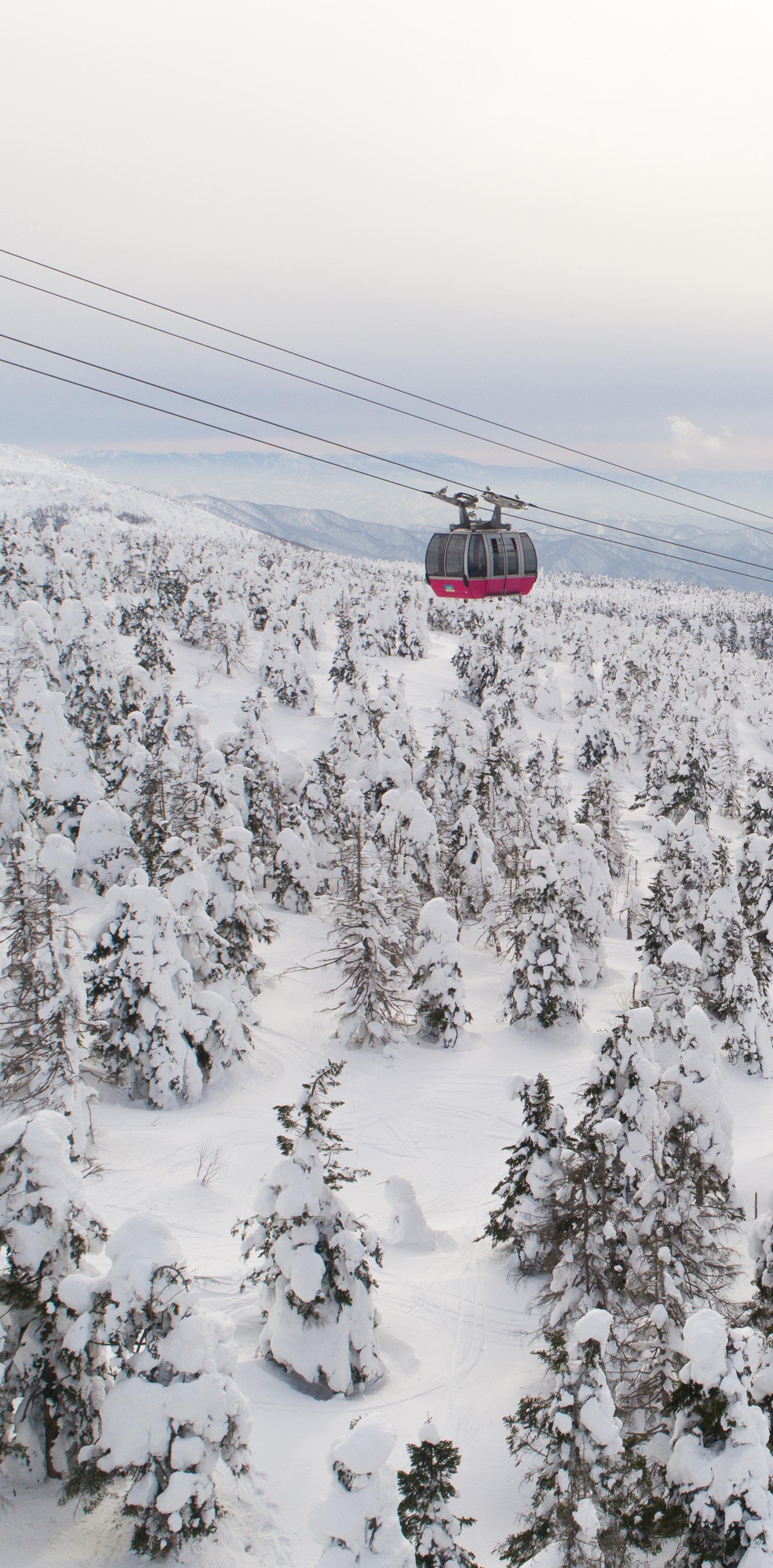
It’s important to note there are a number of problems threatening the existence of these winter creatures. First, the growth of the Aomori Todomatsu trees, which are unique to this area, is typically slow with a low spread rate at high altitudes. Natural propagation of trees is few and far between due extreme weather and lack of assistance from animals, which normally assist with the spread of the trees.
The threat of insects is another factor, which damages the trees and stops leaves from regenerating fast enough, or worst case, cuts off the lifeline completely. Palmerworm caterpillars first infested the trees, then came bark beetles. A study conducted by Yamagata University showed
Winter 2023 | 19
all the trees sampled in the study, as well as additional trees nearby, had been damaged by bark beetles. Insects are more active in warmer temperatures, and recently there have been more days with 15°C or higher daytime temperatures during winter months.
To prevent the beloved snow monsters from going extinct, re-planting and growing efforts are underway, as well as the removal of infected and dead trees to prevent more infestation from occurring. Educating others about the situation and respecting the rules of the mountain is also important. This includes refraining from touching the trees directly or walking in fenced off areas, which could be plantation sites. Enjoy the beauty of these majestic creatures while also taking steps to ensure future generations can do so as well.
You won’t have to wait long to see the snow monsters on your way to Zao. There are posters of juhyo all around Yamagata Station, where the Shinkansen (bullet trains) arrive from Tokyo. There are even some tasty, edible snow monster omiyage (souvenirs) being sold to give to loved ones who didn't get to join you on your winter adventures in Yamagata. v
About theAuthor
After college, Derek Yamashita chose to explore his Japanese-American roots by starting a life deep in the countryside of Yamagata Prefecture where he found joy in the trails, cycling courses, fishing and all the area had to offer. Derek co-founded The Hidden Japan, a travel company promoting travel to the deeper parts of Japan beyond the big cities by working closely with rural communities to create boutique tours where travelers experience Japan alongside the local people. Find out more at thehiddenjapan.com
Essential Info
When to Go
The best time to see juhyo is late January to early February. Be sure to keep an eye on weather patterns and temperatures as every season is slightly different. If you aren’t fortunate enough to visit during peak season, the end of December to the start of March often gives you the opportunity to see the snowy giants in various shapes, sizes and states of transformation. Be sure to layer up, as temperatures from -8°C to -15°C are not uncommon at this time of year.
The Juhyo Festival takes place at the beginning of February and there are World Cup ski competitions. The National Inter High School Competition will also be held at Zao Ski Resort (zaoropeway.co.jp) Feb. 8-11.
Getting There
By Car: Take the Tohoku Expressway from Tokyo to the Murata I.C. (4 hours) and then the Yamagata Expressway to Yamagata Zao I.C. (30 min.). Continue on Route 13 to Zao Onsen (30 min.).
By Train: From Tokyo take the JR Yamagata Shinkansen to Yamagata Station (2 hrs. 30 min.) and then the Zao bound bus to Zao Onsen (40 min.).
By Plane. There are flights from Tokyo, Osaka and Nagoya to Yamagata Airport. From there take the bus to Zao Onsen (60 min.). From Sendai Airport there is also a direct bus (reservation required) to Zao Onsen (1 hr. 25 min.).


Place to Stay
There are a number of traditional ryokan in Zao such as the Takamiya Ryokan (zao.co.jp/lang/en/takamiya/ ) as well as classic ski lodges like Lodge Scole ( lodgescole.com ). Lodge Scole has an annual count down party Dec. 31 to celebrate the New Year.
knowledge is “POWDER” think deep
SKIER: YUSUKE HIROTA


Winter 2023 | 21
The general rule with skiing is, the farther north you go, the better the snow. Well, you can’t go any farther north in Japan than Hokkaido, and the area rightfully creates the biggest buzz for people in search of deep powder. The reason for this is simple: Hokkaido consistently gets the best snow conditions, and Niseko in particular is recognized as a world-class ski resort, rivaling the long-established ski areas in Europe and North America. However, anyone thinking Hokkaido is a one-trick pony will be pleasantly surprised to find there are some great ski areas all over Japan’s north island.


HOKKAIDO
Niseko Grand Hirafu Niseko Annupuri Tomamu
Niseko Village
Rusutsu
Furano
Kamui Ski Links Sahoro Kiroro Snow World
NISEKO
HANAZONO 37% 40% 23% 1 5 1 8 1 Niseko Grand Hirafu 30% 40% 30% 1 1 13 courses 30 courses 4 Niseko Annupuri Niseko HANAZONO Resort 36% 32% 32% 1 4 27 courses 2 Niseko Village Resort Beginner Intermediate Advanced Lifts Gondola Niseko HANAZONO Resort Niseko Grand Hirafu Longest Course: 5,600m Top Elevation: 1,200m Base Elevation: 240m Niseko Annupuri Longest Course: 4,000m Top Elevation: 1,156m Base Elevation: 400m Niseko Village Longest Course: 5,000m Top Elevation: 1,175m Base Elevation: 280m Park Park Longest Course: 4,550m Top Elevation: 1,030m Base Elevation: 308m 11 courses 25% 63% 12% 3 22 | TRAVELER
NISEKO Kutchan-cho, Hokkaido Niseko United: www.niseko.ne.jp
GRAND HIRAFU, NISEKO ANNUPURI, NISEKO VILLAGE RESORT, NISEKO
Niseko gets a lot of attention, and rightfully so. It is the most international ski resort in Japan and consistently gets some of the heaviest snowfall in the world. The mountain, Mt. Annupuri (which, in Ainu, means White Mountain), is home to three ski resorts: Niseko Grand Hirafu, Niseko Village (formerly Niseko Higashiyama) and Niseko Annupuri.
Collectively they form Niseko United and share a common lift pass. The Hanazono area of Niseko Grand Hirafu is independently managed, and one of the more progressive areas on the mountain, featuring three terrain parks and the only FIS Half Pipe in Japan, which is well maintained throughout the season, and a bag jump, where you can safely practice your freestyle tricks.
Niseko Village (which is a 10-minute drive from the main Hirafu Village area) also has nice facilities and a lot of activities. Niseko Annupuri keeps the lowest profile of the three, but has some nice areas that can be less crowded. Other nearby resorts are Niseko Moiwa and Niseko Weiss. The lifts are no longer running at Weiss, but cat tours service the area. While a few other resorts may challenge Niseko’s claim to the best powder in Japan, there is no doubt Niseko has the best, and widest, selection of restaurants and accommodations in Japan.
The infrastructure is well organized, with efficient bus service to/from Sapporo and New Chitose Airport and a shuttle bus that takes visitors to the various resorts. On one of those rare midseason clear days, the view of Mt. Yotei from the slopes is the quintessential image of skiing in Japan.



NISEKO ANNUPURI


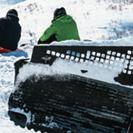

(0136) 58-2080 https://annupuri.info/winter/english

























Dec. 3 - May 7 8:30 - 16:30 (16:30 - 19:30)
1 DAY TICKET Adults ¥5,600 Kids ¥3,300
By Train: 120 minutes from Sapporo Station to Niseko Station


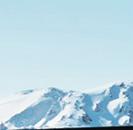

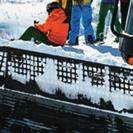
ACCESS
By Car: 120 minutes from Sapporo City and New Chitose Airport
NISEKO VILLAGE
(0136) 44-2211 www.niseko-village.com
Dec. 3 - Apr. 2 8:30 - 16:30 (16:30 - 19:00)
1 DAY TICKET Adults ¥6,200 Youth ¥4,700 Kids ¥3,800
By Train: 120 minutes from Sapporo Station to Kutchan Station
ACCESS
By Car: 120 minutes from Sapporo City and New Chitose Airport
NISEKO GRAND HIRAFU


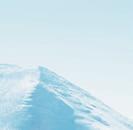
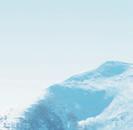


(0136) 22-0109 www.grand-hirafu.jp
Dec. 3 - May 7 8:30 - 16:30 (16:30 - 19:00)

1 DAY TICKET Adults ¥6,600 Kids ¥4,000
ACCESS
By Train: 120 minutes from Sapporo Station to Kutchan Station By Car: 130 minutes from Sapporo City and 130 minutes from New Chitose Airport
NISEKO HANAZONO RESORT
(0136) 21-6688 https://hanazononiseko.com
Dec. 3 - Apr. 9 8:30 - 16:30 (16:30 - 19:00)



















































































1 DAY TICKET Adults ¥6,600 Kids ¥4,200
By Train: 120 minutes from Sapporo Station to Kutchan Station
ACCESS


By Car: 120 minutes from Sapporo City and New Chitose Airport

Park Park
Park
Park Winter 2023 | 23
(0136) 46-3111
Rusutsu is more than a good day trip from Niseko. It’s an excellent all-round mountain with 37 courses over three mountains: Mt. Isola, East Mountain and West Mountain. Powder lovers will love the big valleys full of deep tree runs funneling down to the modern, efficient lifts, and everyone will enjoy the views of the back side of Mt. Yotei and the quieter alternative to bustling Niseko. The skiin/ski-out Rusutsu Resort Hotel is the most convenient place to stay with hot springs, day care, fireworks during Christmas and New Year and a variety of great activities.
KIRORO SNOW WORLD

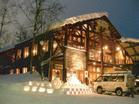
(0135) 34-7111
Kiroro is a relatively new (opened in 1992) ski resort just 30 kilometers west of Sapporo. The resort has great facilities, some amazing views of the Japan Sea and the natural surroundings and gets a lot of snow from mid-December until early May. Kiroro makes up for its lack of challenging terrain by offering a few powder pockets and plenty of gentle slopes for beginners and children. The "Powder Zone" opens middle of January to middle of March. Kiroro also has one of the best base lodges in Japan, complete with a hot spring to soak away the day’s bumps and bruises and an adjacent hotel with good restaurants.
Rusutsu, Hokkaido

(0115) 98-4511
If you ski or snowboard, Sapporo is hard to beat. Residents can get a few quick runs just 15 minutes from downtown at Sapporo Bankei. However, many families make the one-hour drive out to “Kokusai,” which offers more choices for beginners and intermediate skiers and has a nice park. Although this is a day-trip resort, it does attract a spattering of international guests who find it hard to stay in the city when snow is falling. Most will be pleasantly surprised as this coastal resort gets its fair share of powder days and offers some varied, albeit fairly short, runs and a small, but decent park. Night skiing is not available.


Akaigawa, Hokkaido
(0116) 82-6000
Nov. 19 - Apr 2 9:00 - 21:00 (16:00 - 21:00)
If someone mentions the Winter Olympics in Japan, you’ll undoubtedly think of the 1998 Nagano Olympics. Yet 26 years earlier, Sapporo hosted its own Winter Games at a resort just 30 minutes from downtown Sapporo. Yet, what might be most surprising is this resort, Sapporo Teine, offers some steep and deep powder fun for intermediate and advanced riders. The offpiste terrain is up in the Teine Highland area, accessible without having to duck ropes or elude the patrol. The Teine Olympia is a kinder, gentler area, which has a lively park scene. Night skiing available until 9 p.m.






RUSUTSU RESORT
SAPPORO KOKUSAI
1 DAY TICKET Adults ¥6,500 Kids ¥3,500 1 DAY TICKET Adults ¥5,900 Kids ¥3,100 1 DAY TICKET Adults ¥4,600 Kids ¥1,000 1 DAY TICKET Adults ¥5,500 Kids ¥2,900
SAPPORO TEINE
ACCESS By Bus: 120 minutes from Sapporo Station via shuttle bus By Car: 90 minutes from New Chitose Airport
ACCESS By Car: About 30 minutes by car from Otaru or 80 minutes by car from downtown Sapporo
ACCESS By Car: One hour from Sapporo city center, depending on traffic
ACCESS By Car: 30 minutes from Sapporo city center, depending on traffic
https://rusutsu.com/en
Nov. 26 - Apr. 2 9:00 - 20:00 (16:00-20:00)
www.kiroro.co.jp/english/ Dec. 6 -
7
May
9:00 - 19:00 (16:30 - 19:30)
www.sapporo-kokusai.jp Nov. 18 - May 7 9:00
- 17:00
www.sapporo-teine.com
Hokkaido Longest Course: Top Elevation: Base Elevation: 37% 37% 10 courses Beginner Intermediate Advanced Lifts Gondola 4 1 Park Longest Course: 4,050m Top Elevation: 1,180m Base Elevation: 570m 37% 37% 26% 10 courses Beginner Intermediate Advanced Lifts Gondola 4 1 4 Park Longest Course: Top Elevation: Base Elevation: 30% 60% 7 courses Beginner Intermediate Advanced Lifts Gondola 1 2 Park Longest Course: 3,600m Top Elevation: 1,100m Base Elevation: 670m 30% 60% 10% 7 courses Beginner Intermediate Advanced Lifts Gondola 1 2 2 Park Longest Course: Top Elevation: Base Elevation: 40% 30% 15 courses Beginner Intermediate Advanced Lifts Gondola 1 1 Longest Course: 6,000m Top Elevation: 1,023m Base Elevation: 680m 40% 30% 30% 15 courses Beginner Intermediate Advanced Lifts Gondola 1 1 Park Park Park Park 24 | TRAVELER
Sapporo, Hokkaido Sapporo,
(0156) 64-4121 www.sahoro.co.jp
Dec. 10 - Apr. 9 9:00 - 18:00 (15:00 -18:00)
Sahoro is a well-run resort that caters to families. There are 17 nicely groomed courses, some “semi-backcountry” and a terrain park. Like Tomamu, it’s a place where you can have fun whether you are a skier or not, with lots of activities. Two all-inclusive hotels service Sahoro Resort: The Sahoro Resort Hotel, an attractive luxury hotel, and the Club Med Sahoro. English ski lessons are available and lots of organized fun for the whole family. Sahoro is not for the budget traveler, but makes for a great family getaway.
HOSHINO RESORTS TOMAMU

(0167) 58-1111 www.snowtomamu.jp
Dec. 1 - Apr. 2 9:00 - 18:00 (16:00-18:00)
Tomamu has excellent facilities and a beautiful location. Many courses are suited for beginners, yet a challenging double black diamond course and cat-ski tours will challenge advanced riders. Tomamu is a destination in itself with a plethora of ways to entertain the whole family. There’s a good selection of restaurants, an indoor wave pool, Kids Park, Ice Village and a variety of spa and relaxation options. The resort has also expanded the Family Adventure area and connected the two mountains.
FURANO RESORT
(0167) 22-1111 www.princehotels.co.jp/newfurano
Nov. 26 - May 7 8:30 - 19:30 (16:30 -19:30)
Central Hokkaido's Furano Resort is known for blue skies, yet manages nearly nine meters of snow each year. There are two sides to the mountain, serviced by a 101-person cable car (Japan’s fastest). The nearby Tokachi Range is a popular backcountry playground. The ski-in/ ski-out New Furano Prince Hotel has a new hot springs facility. Join the Host Program and get a tour from a local or a bus tour from January to March to Lake Shikarebetsu’s ice village and bathe in ice bathhouses or enjoy a drink at the ice bar built on the frozen lake.




ACCESS Bus or car access is recommended: 60 minutes from Asahikawa Airport to Furano Station
KAMUI SKI LINKS
(0166) 72-2311 www.kamui-skilinks.com
Mid of Dec. - Late Mar. 9:00 - 17:00
Kamui Ski Links is a resort run “by skiers, for skiers.” Those who enjoy powder and tree skiing will understand why this little resort 20 kilometers outside of Asahikawa has so many admirers. Management has no restrictions on tree skiing and has even left several courses in which to play ungroomed. On top of that, the snow quality is excellent. You may find yourself in some short lines for the lifts on weekends, but on weekdays it is nothing but fresh lines down the hill. Be sure to warm up by the fireplace at Trattoria & Pizzeria 751 at the top of the gondola.
SAHORO RESORT
1 DAY TICKET Adults ¥5,800 Kids ¥4,600 1 DAY TICKET Adults ¥5,400 Kids ¥3,400 1 DAY TICKET Adults ¥6,000 Kids FREE 1 DAY TICKET Adults ¥3,800 Kids ¥1,800
ACCESS By Train: 94 minutes from New Chitose Airport to Shintoku Station By Car: 200 min. from Sapporo to Tomamu I.C.
ACCESS By Train: 90 minutes from New Chitose Airport to Tomamu Station By Car: 100 minutes from New Chitose Airport
ACCESS Bus or car access is recommended: About 40 minutes from downtown Asahikawa on Route 12
Park Park
Shintoku, Hokkaido
Shimukappu, Hokkaido
Furano, Hokkaido
Asahikawa, Hokkaido Winter 2023 | 25
Park Park Park Park
TOHOKU

The Tohoku Region represents about 35 percent of the area of Japan’s main island, Honshu. Running north-south through the center of Tohoku are the Ou Mountains, ranging between 1,500-2,000 meters. When the famous poet, Matsuo Basho, wrote The Narrow Road to the Deep North (Oku no Hosomichi), these were the mountains toward which he walked. Today they are full of some of Japan’s least crowded ski resorts. Tohoku may seem far away, but it’s only two-to-four hours by bullet train or you can jump on a domestic flight. Regardless, it’s never too far to go to find good snow.
HAKKODA ROPEWAY

(017) 738-0343 www.hakkoda-ropeway.jp

- end of Feb. 9:00 - 15:20
The eight peaks of Hakkoda attract Japan's most devoted powder lovers. It is basically backcountry with a 100-person gondola that takes 10 minutes to the top with four trips every hour. Once you get off, you can choose from "Direct" or "Forest" trails. You won't get many blue bird days here, and visibility can be difficult during snowstorms, which happen often. So if you are a Hakkoda newbie and want to explore the terrain, it's best to grab a local guide. Hakkoda Sansou, across the parking lot from the gondola, is the closest accommodation. Up the road, Sukayu Onsen is a mixed hot spring with a 300-year history and a 1,000-person bath.
ACCESS By
HACHIMANTAI RESORT
(0195) 78-4111 www.hachimantai.co.jp
24 - Mar. 26
It’s easy to get confused because there are two Iwate Hachimantai resorts and another in Akita.
Iwate’s Hachimantai Resort, is a great family ski destination. Hachimantai Resort covers two main areas, Panorama ski area and the Shimokura ski area. Both are well sheltered from the weather, and Panorama features a huge night skiing area. There are high-speed lifts and mainly beginner or intermediate courses.
ACCESS By
APPI KOGEN
(0195) 73-6401 www.appi-japan.com
Dec. 3 - Apr. 2 8:00 - 20:00 (16:00 - 20:00)
APPI is a giant resort (45.1 kilometers of trails) with a long season (thanks to the many north-facing slopes) plus some great facilities (thanks to bubble era spending). Unlike many resorts in Japan that have relatively short runs, the average course length at APPI is 2,100m; the longest 5,500m. It’s possible to do Appi as a long day-trip from Tokyo but, with two ski-in/ski-out hotels and an annex hotel, which collectively sleep 4,100 guests, why not stay and soak away sore muscles at one of the two natural hot springs after a day on the mountain. Families will appreciate the Kids Park.
ACCESS By Train and Bus: 50 minutes from Morioka Station to APPI. By Car: 15 minutes from
TAZAWAKO SKI RESORT

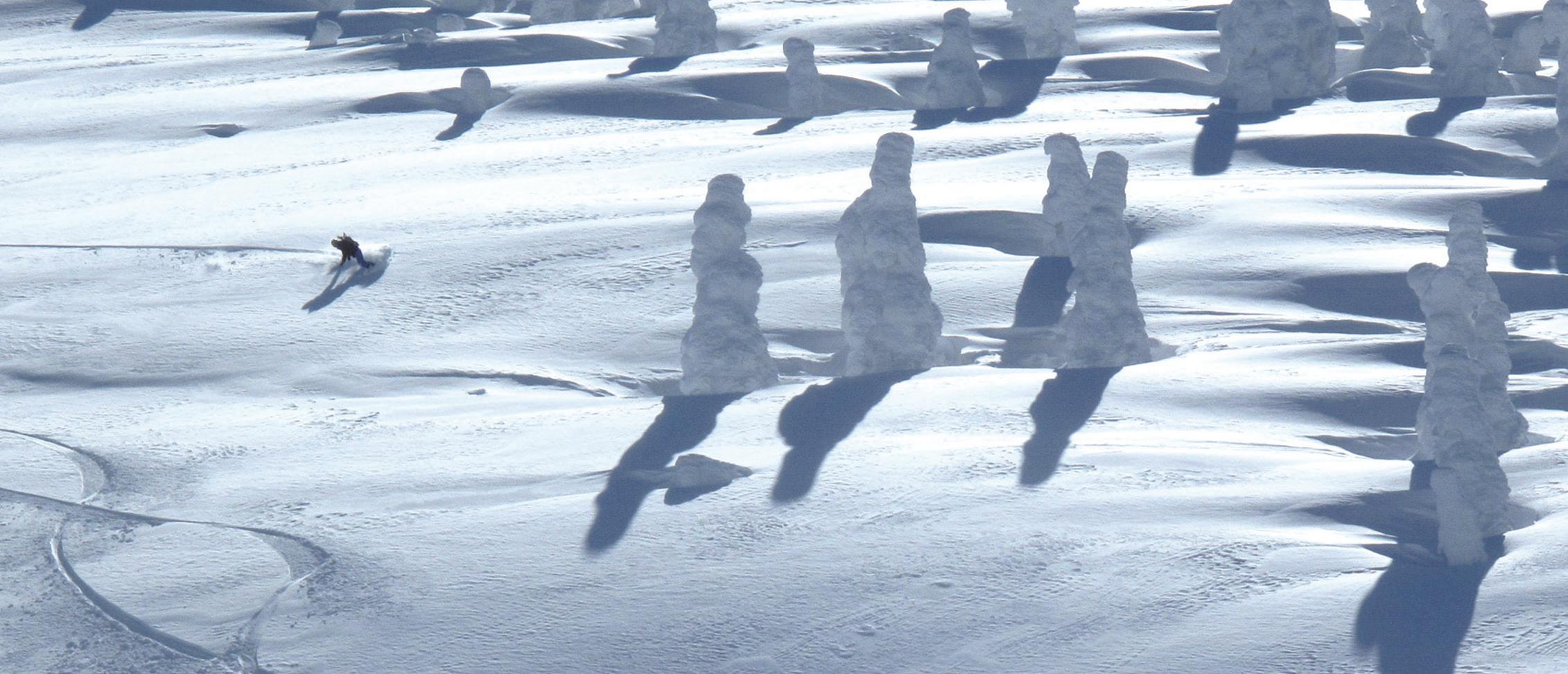
(0187) 46-2011 www.tazawako-ski.com
Dec. 17 - Apr. 2 9:00 - 16:00
2,700m
When it snows in Tazawako, and it usually does, there is deep powder and a good variety of courses to enjoy. When it is not snowing, you are treated to one of the great views of any ski resort in Japan, with Lake Tazawa below providing a stunning backdrop. For this reason, Tazawako is a popular ski resort for people in Tohoku, but the lines are still relatively short when compared to resorts in other areas of Japan. The lifts run directly from the Tazawako Onsen hotel area. The selection of runs should keep everyone happy; on one side is a beginner and intermediate area, and on the other is a more challenging advanced course. Powder lovers won’t want to miss the Komagatake Panoramic Cat Tour.
ACCESS By Train and Bus: Shinkansen from Tokyo to Tazawako Station (3 hours), then 30 minutes by bus to the ski resort

Photo courtesy of JapowTours.com 1 DAY TICKET Adults 6 Times (on Ropeway) ¥6,100 Kids ¥2,150 Beginner Intermediate Advanced Lifts Gondola Longest Course: 5,000m Top Elevation: 1,324m Base Elevation: 660m 20% 1 Tour Route Area Tour Route Area 5 courses Beginner Intermediate Advanced Lifts Gondola Longest Course: 5,000m Top Elevation: 1,324m Base Elevation: 660m 20% 60% 20% 1 1 Tour Route Area Tour Route Area 5 courses 1 DAY TICKET Adults ¥5,600 Kids ¥3,100 Beginner Intermediate Advanced Lifts Gondola Longest Course: Top Elevation: Base Elevation: 30% 40% 2 1 3 21 courses Park Park
1 DAY TICKET Adults ¥4,300 Kids ¥3,000
Dec.
Mid-Nov.
Hachimantai, Iwate Hakkoda, Aomori Longest Course: 2,700m Top Elevation: 1,130m Base Elevation: 540m 40% 14 courses Beginner Intermediate Advanced Lifts Gondola 1 Park SHIMOKURA PANORAMA Longest Course:
Top Elevation:
Base Elevation:
30% 40% 30% 14 courses Beginner Intermediate Advanced Lifts Gondola 5 1 Park SHIMOKURA PANORAMA 1
1,000m
540m
1 DAY
TICKET Adults ¥4,100 Kids ¥1,100
Matsuo-Hachimantai I.C. or Ashiro I.C.
Train and Bus: Shinkansen from Tokyo to Morioka Station (2 hours , 11 minutes), then about 90 minutes by bus to Hachimantai Resort
Bus: 80 minutes from Aomori Station By Car: 35 min. from Aomori I.C. and Ishiguri I.C.
Tazawako, Akita Hachimantai, Iwate Longest Course: Top Elevation: Base Elevation: 30% 30% 13 courses Beginner Intermediate Advanced Lifts Gondola 4 2 Park Longest Course: 3,000m Top Elevation: 1,186m Base Elevation: 608m 30% 30% 40% 13 courses Beginner Intermediate Advanced Lifts Gondola 4 2 Park
Appi
Hachimantai
Grandeco Park Park Park Park 26 | TRAVELER
Hakkoda Ropeway
Kogen
Resort Tazawako Miyagi Eboshi Yamagata
Zao Alts Bandai
EBOSHI RESORT
(0224) 34-4001 www.eboshi.co.jp
Dec. 1 - Mar. 26 9:00 - 22:00 (16:00 - 22:00)
Miyagi's Eboshi Resort is on the other side of the mountain from the more famous Yamagata Zao Onsen Ski Resort. It's much quieter, the lift lines are shorter on this side of the track, and the views are fantastic. Although it's a decent sized resort with well laid-out courses and a variety of ways to descend the mountain, it is more geared for beginners or advanced riders, as there is not a lot of challenging terrain. Powder hounds will be salivating on some of the areas outside the lines.
ACCESS By Train and Bus: Shinkansen from Tokyo to Shoroishi-Zao Station (1 hour, 54 minutes) then about an hour to the ski resort
ZAO ONSEN SKI RESORT
(023) 694-9617 www.zao-ski.or.jp

Early Dec. - early May 8:30 - 21:00 (17:00 - 21:00)
Ski resorts each have their own personalities; it is one of the joys of exploring new resort areas. Zao Onsen has a big bubbling personality. The town is literally bubbling with hot springs, and the ski resort offers a unique ski experience— skiing among the famous Zao Snow Monsters (juhyo). The resort is big with four gondolas, 32 lifts and a 10K downhill course. Skiers will enjoy the layout more than snowboarders (too much traversing), but the highlight, undoubtedly, is riding among these huge creatures formed of ice and wind. The peak season is February, and the juhyo illumination is spectacular.
ACCESS By Train and Bus: 2 1/2 hours by bullet train from Tokyo to Yamagata Station, then 40 minutes by bus to Zao Onsen
HOSHINO RESORTS ALTS BANDAI SNOW PARK & RESORT
(0242) 74-5000 www.alts.co.jp
Dec. 23 - late Mar. 8:30-21:00 (17:30-21:00)
With 30K of rideable terrain, nearly 30 courses and progressive free-style parks, it is no surprise ALTS is a favorite of many of the top park riders in Japan. The resort is the largest in southern Tohoku and was the home to the Asia Open. ALTS has a Cat Ski area on the west side of the resort where visitors can enjoy some deep turns. Slide into Yama Cafe for a drink or relax in the hotel's great hot springs. ALTS is a southfacing resort, so it’s bright and features some nice terrain for free riding, but powder lovers will want to head next door to north-facing Nekoma. This year, a route connecting ALTS and Nekoma will open so you can reach Nekoma within a 15-minute walk.






ACCESS By Train: 90 minutes from Tokyo Station to Koriyama Station By Car: 75 minutes from Fukushima International Airport.
GRANDECO SNOW RESORT
(0241) 32-2530 www.grandeco.com 17:00
1
Grandeco Snow Resort is a medium-sized resort with first-rate facilities, which include a gondola and express chairlifts and artificial snow-making capabilities to guarantee early and late-season riding. There is also a luxury hotel and SIA certified Snow Academy. Although the resort is best suited for beginners and intermediate riders, there are tree runs for advanced riders and a well maintained park. Gran Deco is one of the highest resorts in the area, which means good quality snow. The nearby Hotel Gran Deco has westernstyle rooms, an indoor and outdoor swimming pool (open in winter),
Zao-machi, Miyagi
youtube.com/c/gonorthjapan

Park Park
1 DAY TICKET Adults ¥4,700 Kids ¥2,000
1 DAY TICKET Adults
Kids
Yamagata-shi, Yamagata
¥5,500
¥2,800
Bandai, Fukushima
1 DAY TICKET Adults ¥4,900 Kids ¥3,700
ACCESS By Train: 45 minutes from Inawashiro Station via local bus. By Car: 35 minutes from Inawashiro Bandai Kogen I.C.
Jacuzzis, saunas, hot spring baths, restaurants and bars.
Aizu Ura Bandai, Fukushima
Park Park
DAY TICKET Adults ¥5,400 Kids ¥3,800
Park Park
Tohoku is Japan's Last Frontier—the true path less traveled. Hiking and specialized tours in North Japan.
GoNorth.jp Winter 2023 | 27
(0261) 75-2101 www.hakubagoryu.com/e/index.html
Dec. 9 - May 7 8:00 -16:50 (18:00 - 21:30)
Part of Hakuba Valley Resorts, Hakuba Goryu is one of the most scenic and pleasant places to ski. Soak up the view as the Japan Alps soar behind you, and then head down to Escal Plaza, one of the best base lodges in Japan. There is a ski/snowboard rental shop, a nice selection of restaurants and even a bath open until 9 p.m. daily. The Toomi Piste is open until 9:30 p.m. If you’re on a tight budget, there is a “resting room” where you can wait for the lifts to open. It’s a common space that fits up to 100 people (no reservations required). Serious skiers can challenge themselves on the Champions expert run. Hakuba Goryu also shares a common lift pass with Hakuba 47.
(0261) 72-3066 www.happo-one.jp
Dec. 9 - May 7 8:00 - 21:00 (17:00 - 21:00)

Hakuba 47 is a relatively new resort (opened in 1990), and they’ve been trying to take some fresh, progressive steps to making a better resort experience. There are loads of activities and events, an extensive snow park with lots of jibs, kickers and things to launch off, and a great half pipe. The resort also has some excellent intermediate courses, a challenging mogul course and a shared ticket with Goryu, so no shortage of courses from which to choose. If you were wondering about the name, the goal of the resort is to offer a great mountain experience “4” seasons and “7” days a week.
Happo is a huge resort that is heaven for skiers who enjoy well-groomed, long courses. There are many runs, good challenging terrain and a nice park and the Hakuba Banks Park opens on Feb. 1. Happo hosted the downhill races during the 1998 Olympics and, if you want to test your meddle, head to the top of the men’s downhill course. While advanced riders will love Happo, beginners may get frustrated with the many narrow paths leading down the mountain. If you need a break, there are plenty of restaurants to stop for a bite. Note the resort’s popularity means it can get crowded, especially on long weekends.
If the crowds at Happo are too much for you, head over to nearby Iwatake. The base of the resort looks up at Hakuba’s highest peaks for a spectacular view while you enjoy the slopes. The resort itself is surprisingly big, making it a great place to go to get away from the crowds and explore the 26 courses. Lift lines are relatively short by Hakuba standards, and you can often find some pockets of powder here after it has been tracked out at other resorts nearby.




ACCESS By Train and Bus: Shinkansen from Tokyo Station to Nagano Station (1 hour,

agano is the traditional center of the Japan snow scene, and at the heart of it is the Japan Alps. The prefecture is home to some of the finest, steepest and biggest resorts in Japan, and boasts arguably the most breathtaking scenery. Within Nagano, the sheer volume of ski areas is due to the jagged spine of rugged natural beauty known as the Japan Alps slashing through the prefecture. This area is as much a Mecca for photographers as it is for skiers, with its many onsen, snow-swept valleys and bristling peaks. Backcountry fun here is limited only to your preparedness and daring. Hakuba, Shiga Kogen, Nozawa and the Iiyama areas are just the tip of the proverbial iceberg.Hakuba Iwatake Hakuba Happo Hakuba 47 Hakuba Cortina Tsugaike Hakuba Goryu Norikura Kogen Nozawa Onsen Madarao Togakushi Yakebitaiyama Shiga Kogen Area Okushiga Hoppobundaira Higashitateyama Nishitateyama 1 DAY TICKET Adults ¥5,500 Kids ¥2,900 Longest Course: 5,000m Top Elevation: 1,624m Base Elevation: 950m 35% 40% 25% 1 3 9 16 courses Beginner Intermediate Advanced Lifts Gondola Park 1 Longest Course: 5,000m Top Elevation: 1,624m Base Elevation: 950m 35% 40% 25% 1 3 9 16 courses Beginner Intermediate Advanced Lifts Gondola Park 1 1 DAY TICKET Adults ¥5,500 Kids ¥2,900 Longest Course: Top Elevation: Base Elevation: 30% 40% 1 1 8 courses Beginner Intermediate Advanced Lifts Gondola Park Longest Course: 6,400m Top Elevation: 1,614m Base Elevation: 820m 30% 40% 30% 1 1 4 8 courses Beginner Intermediate Advanced Lifts Gondola Park 1 DAY TICKET Adults ¥5,500 Kids ¥3,200 1 DAY TICKET Adults ¥4,600 Kids ¥2,800
HAKUBA
NAGANO
HAKUBA HAPPO-ONE
GORYU
Hakuba, Nagano
Hakuba, Nagano
HAKUBA IWATAKE SNOW FIELD
HAKUBA 47
45 minutes), then an Alpico Bus to Hakuba (60 minutes)
ACCESS By Train and Bus: Shinkansen from Tokyo Station to Nagano Station (1 hour, 45 minutes), then an Alpico Bus to Hakuba (60 minutes)
ACCESS By Train and Bus: Shinkansen from Tokyo Station to Nagano Station (1 hour, 45 minutes), then an Alpico Bus to Hakuba (60 minutes)
ACCESS By Train and Shuttle: Shinkansen to Nagano Station and the direct bus to Hakuba. A shuttle service runs between Goryu and Hakuba 47
(0261) 72-2474 iwatake.jp Dec. 17 - Mar. 27 8:00 - 17:00
(0261) 75-3533 www.hakuba47.co.jp Dec. 10 - May 7 8:00 - 16:20
Hakuba, Nagano
Hakuba, Nagano
Park
Park Park 28 | TRAVELER
Park
N
HAKUBA CORTINA SKI RESORT


If you are looking for a place to spend a quiet, romantic ski weekend in the Hakuba area, head over to Cortina. The massive Green Plaza Hotel with northern European architecture is impressive. If your ski partner is just starting out, the course right outside the door of the hotel is a gentle slope and great for beginners. Although most of the runs are in the beginner to intermediate range, there are some steep courses, and they have adopted a progressive approach to tree skiing and power areas in which guests are responsible for themselves if they get into trouble. The Hakuba Cortina Resort also offers a convenient shuttle from Nagano Station (one-way, 1,000 yen).
ACCESS By Train: From Shinjuku to Minami Otari: 4 hours (By Azusa) By Car: 90 minutes from Nagano I.C. to hotel
HAKUBA TSUGAIKE KOGEN


(0261) 83-2515 www.tsugaike.gr.jp
Dec. 18 - May 8 8:00 - 17:00 (8:00 - 20:50 on Sat.)
Tsugaike is actually located in Otari Village, just up the road from Hakuba. The resort could be considered one of the most underrated, considering it has some huge bowls, a big gondola, terrain park, cross-country course, good night skiing and some interesting runs. There are even heli-skiing tours in spring and good places to hike to get fresh turns. The Children’s Square is great for kids just starting out on the slopes. Most of Tsugaike’s runs are in the intermediate range, but there are a few expert areas as well. To finish off a great day, head over to Tsuga no Yu hot springs, just 100 meters from the gondola.
ACCESS
By Train and Bus: Shinkansen from Tokyo Station to Nagano Station (1 hour, 45 minutes), then a shuttle to Hakuba Cortina (80 minutes)
MT. NORIKURA
(0263) 93-2645 www.brnorikura.jp

Dec. 3 - early Apr. 8:45 - 16:30
The base of Mt. Norikura (not to be confused with the smaller Hakuba Norikura) starts at 1,500 meters, meaning the snow quality is excellent, and you’ll spend more time riding than in lift lines. It is a relatively small, local resort, yet the dedicated locals have created a progressive and challenging terrain park and good facilities for beginners to learn to ride. There is no ATM, so bring cash or your credit card and make sure to pack chains or have a 4WD, since Norikura is nestled deep in the Northern Alps. After a day on the mountain, don’t miss the great rotenburo at Yukemurikan.

Longest Course: 4,630m Top Elevation: 1,704m Base Elevation: 800m 50% 30% 20% 1 1 9 14 courses 9 2 1 Beginner Intermediate Advanced Lifts Gondola Park Longest Course: 4,630m Top Elevation: 1,704m Base Elevation: 800m 50% 30% 20% 1 1 9 14 courses 9 2 1 Beginner Intermediate Advanced Lifts Gondola Park Longest Course: 2,025m Top Elevation: 1,402m Base Elevation: 872m 40% 30% 30% 16 courses Beginner Intermediate Advanced Lifts Gondola 2 5 Longest Course: 2,025m Top Elevation: 1,402m Base Elevation: 872m 40% 30% 30% 16 courses Beginner Intermediate Advanced Lifts Gondola 2 5
1 DAY TICKET Adults ¥4,200 Kids ¥2,600
(0261) 82-2236 www.hgp.co.jp Dec. 17 - Apr. 2 8:30 -17:00 (Dec. 29 - Jan. 3, 9, 10: 17:00 - 21:00)
Hakuba, Nagano
1 DAY TICKET
Adults ¥5,500 Kids ¥3,300
Otari, Nagano
1 DAY TICKET Adults
¥4,300 Kids ¥2,200
ACCESS By Train: Super Azusa Express train from Shinjuku to Matsumoto (2 hours, 37 minutes. Transfer at Matsumoto, then on to Shin Shimashima (30 minutes)
Norikura Kogen Onsen, Nagano Winter 2023 | 29
Park Park Park
Okushiga Kogen
Yakebitaiyama
Yama no Kami
Ichinose Family
Tanne no Mori
Diamond
from late November to early May. Shiga Kogen hosted the women’s downhill, slalom, the super giant slalom and both snowboarding events for the 1998 Nagano Olympic Winter Games.
With more than 80 accommodations scattered around the area, there is no shortage of places to stay, although it has retained an “old school” feel with most restaurants found inside hotels; some serving Shiga Kogen’s excellent microbrew. There are many onsen in the area to soak in after a day on the mountain, yet the most famous in the area is off-limits to humans. Jigokudani Yaen Koen is a sanctuary for resident snow monkeys that lounge in their own hot springs, while visitors snap away with their cameras.
Shiga Kogen has limited ATM access (ATM is available at the Shiga Kogen Post Office in the Hasuike area), so bring some cash.
Starting this year, a common ski lift pass will be available for Shiga Kogen Resort’s 13 ski areas which are part of the “Shiga Kogen Resort Chuo Area.” These resorts include Sun Valley, Maruike, Hasuike, Giant, Happo Bunahira, Higashi Tateyama, Teragoya, Takamahara


Terakoya
Hoppo Bunadaira, Higashidateyama, Nishidateyama
Okushiga Kogen is known as “Skiers Paradise” as it remains a skiers-only resort, (along with Kumanoyu), while Yakebitaiyama is a Prince Resort with excellent facilities. The Hoppo Bunadaira area is great for beginners and families with small children while Higashidateyama is best suited for advanced skiers, although there is a gentle woodland course as well. The resort hosted the men’s and women’s giant slalom in the 1998 Olympic Games, and it boasts an extremely challenging downhill course. The restaurant at the summit of Mt. Higashidate boasts incredible panoramic views and is the starting point to get to other ski areas such as Terakoya.
ACCESS By Train and Bus: 110 minutes from Tokyo Station to Nagano Station, then bus (70 minutes) to Shiga Kogen resorts

HOPPO BUNADAIRA - HIGASHITATEYAMA - NISHITATEYAMA
(0269) 34-2301 https://shigakogen.co.jp
Nov. 26 - May 7 8:30 - 16:30
Kids ¥2,700
ACCESS By Train: 90 minutes from Tokyo Stn. to Nagano Stn. By Car: 300 minutes from Tokyo
YAKEBITAIYAMA
(0269) 34-3117 www.princehotels.co.jp/ski/shiga/winter
Dec. 3 - May 7 8:30 - 16:00 (18:00 - 20:00)
1 DAY TICKET Adults ¥5,300 Kids FREE
ACCESS By Train: 110 minutes from Tokyo Stn. to Nagano Stn. By Car: 300 minutes from Tokyo
OKUSHIGA KOGEN SKI FIELD
(0269) 34-2225 http://en.okushiga.jp
Mid-Dec. - early May 7:30 - 16:30
1 DAY TICKET Adults ¥6,000 Kids ¥3,000
ACCESS By Train: 110 minutes from Tokyo Stn. to Nagano Stn. By Car: 300 minutes from Tokyo
DAY TICKET Adults
1
¥5,600
Giant Hasuike Maruike SunValley Kidoike Yokoteyama
Shibutouge Kumanoyu
Longest Course: 2,200m Top Elevation: 2,000m Base Elevation: 1,460m 45% 35% 20% 1 5 9 courses Beginner Intermediate Advanced Lifts Gondola Park Park Park 30 | TRAVELER
NOZAWA ONSEN
(0269) 85-3166 www.nozawaski.com

Nov. 26 - May 7 8:30 - 17:00 (16:30 - 20:00)
If you’re looking for the quintessential Japanese ski experience, Nozawa Onsen is hard to beat. This traditional hot spring village sits at the base of a great mountain (Mt. Kenashi, 1,650m). The resort is one of the oldest ski grounds in Japan, getting consistent snowfall. There are two gondolas and a large selection of courses to choose from. The town also features 30 hot springs scattered around the village (including 13 free baths in town) and the Dosojin Matsuri (Fire Festival) held on Jan. 15, which is a spectacle to behold.
ACCESS By Train: Tokyo Station to Nagano Station by Shinkansen (109 minutes), then Iiyama Line to Togari-Nozawa Onsen St. (60 minutes) and taxi or shuttle bus to Nozawa Onsen. By Car: 75 minutes from Nagano Station
MADARAO MOUNTAIN RESORT
(0269) 64-3214 www.madarao.jp 17:00
Located in northeastern Nagano just above Iiyama Town, Madarao Kogen features 16 lifts and 22 courses across a bowl-shaped terrain on Mt. Madarao (1,382 meters). The resort has a nice variety of courses, groomers, a tree run area, free ride park, wave courses and kids park. They claim 60 percent of the course is ungroomed so, if you like riding powder, there should be plenty in which to play. There is also a joint ticket available for Tangram Ski Circus, a small, pretty resort. Backcountry tours can be arranged through the resort.




ACCESS By Train and Bus: Shinkansen from Tokyo to Iiyama Station (100 minutes) then take a bus to Madarao Kogen Hotel (30 minutes)
TANGRAM MADARAO
(026) 258-3511 www.tangram.jp/eng
Dec. 17 - Apr. 2 8: 30 - 16: 30 (17:30 - 20:30)


Tangram Ski Circus sounds like a great place for kids—and it is. The ski-in/out Hotel Tangram sits right at the bottom of this family-friendly resort. Facilities include hot spring baths and a heated indoor swimming pool. The resort features 14 courses on the northwest side of Mt. Madarao, with well-groomed runs, great for mom and dad to get in some leg burners with the kids. The trees look tempting, but beware the ski patrol is vigilant here. However the resort is connected to Madarao Kogen, giving you 30 courses to explore if you get bored with the runs right outside your door.
ACCESS By Train and Bus: Shinkansen from Tokyo to Nagano City (1 hour, 28 minutes) then by bus to Tangram Madarao
TOGAKUSHI SKI FIELD
(026) 254-2106 www.togakusi.com
Dec. 10 - Mar. 31 8:30 - 16:30
Togakushi is an interesting, medium-sized resort. The name “Togakushi” means “hidden door,” it derived from the Japanese myth and the resort is owned by Nagano City, yet it is still relatively unknown to people outside the area. The best way to describe Togakushi is pleasant. The conditions always seem to be pretty good, course is variegated and there are often great powder days. Best of all, it never seems to get as busy as the more popular Nagano resorts, and it has retained a very local feel. Togakushi Village is in itself an interesting place. It is famous for soba, and there are some beautiful shrines, temples and onsen nearby to finish off a great day on the mountain.
ACCESS By Train and Bus: Shinkansen from Tokyo Station to Nagano Station (1 hour, 30 minutes), then less than 1 hour to Togakushi by bus
1 DAY TICKET Adults ¥5,000 Kids ¥2,000
Iiyama, Nagano TANGRAM SKI CIRCUS
Park
1 DAY TICKET Adults ¥4,300 Kids ¥3,000
Longest Course: 2,500m Top Elevation: 1,320m Base Elevation: 800m 30% 40% 30% 14 courses Beginner Intermediate Advanced Lifts Gondola 3 2 1 MADARAO MOUNTAIN RESORT Park
Madarao, Nagano
1 DAY TICKET Adults ¥4,500 Kids ¥2,500
Longest Course: 3,000m Top Elevation: 1,750m Base Elevation: 1,200m 30% 40% 30% 19 courses Beginner Intermediate Advanced Lifts Gondola 2 Park 5 Longest Course: 3,000m Top Elevation: 1,750m Base Elevation: 1,200m 30% 40% 30% 19 courses Beginner Intermediate Advanced Lifts Gondola 2 Park 5 Park Longest Course: 10,000m Top Elevation: 1,650m Base Elevation: 565m 40% 30% 40% 2 5 10 1 36 courses 3 Beginner Intermediate Advanced Lifts Gondola Park Park 1 Longest Course: 10,000m Top Elevation: 1,650m Base Elevation: 565m 40% 30% 40% 2 5 10 1 36 courses 3 Beginner Intermediate Advanced Lifts Gondola Park Park 1
Togakushi, Nagano
1 DAY TICKET Adults ¥5,200 Kids ¥2,900
Park Winter 2023 | 31
Nozawa Onsen, Nagano
HOUDAIGI
(0278) 75-2557 www.hodaigi.jp
Dec. 10 - early Apr. 8:30 - 16:30
While neighboring Niigata gets most of the attention, Gunma quietly has some great snow resorts of its own. Located in northeast Gunma near the border with Niigata, Minakami has 10 ski resorts and is just 90 minutes from Tokyo. Oze Katashina is another quality area that flies under the radar. Katashina Town lies in the shadows of mighty Mt. Hotaka and Mt. Shirane and features nearby resorts such as the popular Oze Iwakura, Hotaka Bokujo, a boarder’s park, and Oguna Hotaka, a nice mid-sized resort. Manza, to the east of Katashina, the popular ski and onsen areas of Manza and Kusatsu Resort & Spa are great places to relax before or after a good day on the mountain.
OKUTONE SNOW PARK



(0278) 72-8101 www.okutone.jp
Dec. 17 - Apr. 2 8:00 - 22:00 (weekends & holidays 6:00 - 24:00) (17:00-22:00) (Until 24:00 on Fridays, Saturdays, and the days before National Holidays)
Minakami Houdaigi ski resort is the largest in the Minakami area. The resort, due to the higher elevation, also gets good quality snow. Although there are many beginner and intermediate runs, there are a few advanced courses as well, including a killer 40-degree slope and a 2,600-meter cruiser.

ACCESS By Train and Bus: Shinkansen to Jomo Kogen (75 minutes) then bus to Houdaigi (70 minutes)
(0278)-72-6688 www.norn.co.jp
Dec. 19 - Mar. 26 8:00 - 22:00/24:00 (16:30 - 24:00)
If rails, pipes and jumps are your thing, Okutone ski area is the place to go in Minakami. The park staff takes good care of guests who come to perfect their style at the resort’s park. The night sessions are popular, since they keep the lights on until midnight on Friday and Saturday nights and before national holidays. The north-facing courses have nice snow quality, and you can enjoy some turns on the 3,900-meter long course. Okutone is just two hours from Tokyo, making it super convenient. They offer free tickets to kids under 12 and free coffee if you come before 10 a.m. on weekdays.
ACCESS By Train and Bus: Shinkansen to Jomo Kogen (75 minutes) then bus to Okutone (40 minutes)

TENJINDAIRA
(0278) 72-3575 www.tanigawadake-rw.com
Dec.1 - Apr. 16 8:30 - 16:30

Situated just three kilometers from the Minakami Interchange, Norn Minakami is the most convenient of the Minakami Resorts if you are coming by car. The resort is great for families. They’ve created “family zones” where the average slope is just 13 degrees and a Day Care Center where parents can drop off the little ones and enjoy some time on the mountain themselves. Norn is open from 7 a.m. to midnight on weekends, so you can enjoy a long day on the slopes and, like all Minakami resorts, it is not far from some great hot springs.
Although Tenjindaira is better known to most for trekking in summer, when the tram is packed with hikers, the resort is a popular stop on the backcountry trail. The resort itself is relatively small, but lift lines are usually short and the snow quality can be excellent if it’s not too windy up top. However, the secret to “Tenjin” is off the main trails. Those who like their riding steep and deep head for the backcountry. This is “enter at your own risk” territory and not a place to go without avalanche gear (and the knowledge how to use it). Better yet, hire one of the knowledgeable local guides and enjoy some "Japow!"
ACCESS By Train and Bus: Shinkansen to Takasaki Station, then change to the Joetsu Line to Minakami Station,
GUNMA 1 DAY TICKET Adults ¥4,500 Kids ¥3,000 1 DAY TICKET Adults ¥4,200 Kids FREE 1 DAY TICKET Adults ¥4,500 Kids ¥3,600 1 DAY TICKET Adults ¥4,000 Kids ¥2,500 Okutone Snow Park Norn Minakami Tenjindaira Tanigawadake Kawaba Minakami Houdaigi Oze Iwakura Manza Onsen Longest Course: Top Elevation: Base Elevation: 30% 40% 5 1 10 courses Beginner Intermediate Advanced Lifts Gondola Park Longest Course: 3,000m Top Elevation: 1,083m Base Elevation: 550m 30% 40% 30% 5 1 10 courses Beginner Intermediate Advanced Lifts Gondola Park Beginner Intermediate Advanced Lifts Longest Course: 2,000m Top Elevation: 1,220m Base Elevation: 820m 30% 2 5 courses Park Beginner Intermediate Advanced Lifts Longest Course: 2,000m Top Elevation: 1,220m Base Elevation: 820m 20% 60% 20% 2 2 5 courses Park Longest Course: Top Elevation: Base Elevation: 30% 40% 10 courses Beginner Intermediate Advanced Lifts Gondola 4 1 Park Longest Course: 4,000m Top Elevation: 1,500m Base Elevation: 750m 30% 40% 30% 10 courses Beginner Intermediate Advanced Lifts Gondola 4 1 Park
MINAKAMI
NORN MINAKAMI
Minakami, Gunma
Minakami, Gunma
TANIGAWADAKE
then 20 minutes by bus to Tenjindaira
ACCESS By Train: 150 minutes from Tokyo Station to Minakami Station, then free shuttle. By Car: 90 minutes from Tokyo (Nerima IC) via Kanetsu Expressway
Minakami, Gunma
Minakami, Gunma
32 | TRAVELER
Kusatsu Kokusai
Park Park Park Park
(0278) 52-3345 www.kawaba.co.jp
Dec. 3 - mid-Apr. 8:30 - 16:00

There’s something different about Kawaba. You’ll notice it the first time you pull into the covered parking area of the eight-story Kawaba City center house. There are six floors of parking and the seventh and eighth floors are filled with restaurants and ski/board shops. On the mountain, Kawaba is progressive as well with a nice balance of park and powder. Within the 10,790 meters of skiable terrain is the “Powder Zone,” a section of the mountain left ungroomed for powder lovers. There is a good mogul course, the Free Ride Park (back by popular demand) and a 3,300-meter trail for cruising. Kawaba City also includes a ski school, kids corner and locker rooms.
ACCESS By Train and Shuttle Bus: Shinkansen to Jomo Kogen (75 minutes), then a 50-minute shuttle bus ride to Kawaba
KUSATSU ONSEN
(0279) 88-8111 www.932-onsen.com
Dec. 17 - Apr. 2 8:30 - 21:00 (17:00 - 21:00)

Although Kusatsu is famous as one of the country’s best onsen resorts, the area also features a quality ski resort that has been around since the Taisho Era and is open nearly six months out of the year. Kusatsu Snow & Spa has a zipline, Kids Square where the little ones can enjoy activities such as snow tubing, and a variety of courses for all levels. However, the best part of being at Kusatsu is the fact you can enjoy some world-famous hot springs after a great day on the mountain.
ACCESS By Train and Bus: Shinkansen to Karuizawa Station from Tokyo (72 minutes), then 55 min. by direct bus from Karuizawa Station
MANZA ONSEN
(0279) 97-3117 www.princehotels.co.jp/ski/manza/winter
Dec. 24 - Mar. 26 8:30 - 16:30
Manza Onsen is another of Prince Resorts signature properties, and the hotel’s buildings command an imposing presence at the bottom of the hill. The resort features a lot of good beginner and intermediate runs and is a great place for families. There are not a lot of challenging runs for advanced skiers, but the scenery is beautiful, the snow quality excellent as it is one of Japan’s highest resorts and the hotel has a nice rotenburo (outdoor bath) for after-ski soaking. The facilities and amenities are on a par with what you’d expect from Prince Resorts, making for a stress-free ski experience.
ACCESS By Train & Bus: Shinkansen to Takasaki Station (50 minutes) then to Manza-kazawaguchi Station (90 minutes). Then change to the Seibu Kanko Bus to Manza Onsen (50 minutes).
OZE IWAKURA
(0278) 58-7777 www.oze-iwakura.co.jp/ski Dec. 17 - Apr. 2
8:15 - 17:00 (17:00 - 21:00)


1 DAY TICKET Adults ¥5,000 Kids ¥2,900
Oze Iwakura is only 150 minutes from Tokyo and one of the top ski resorts in the Kanto region for its variety of slopes and powder snow especially at the 1,700-meter peak. There are 16 courses for all levels of riding, and a kids park. There are also six uncompacted snow courses for powderhounds. Advanced riders can hike up Nishiyama and enjoy backcountry skiing. There are two ski-in, ski-out hotels on the slopes. After a day of riding, relax in hot springs and enjoy Japanese culture. From Tokyo, take a direct highway bus from Shinjuku or a shuttle bus from Jomokogen Station.



ACCESS By Train and Bus: Shinkansen to Jomo Kogen (75 minutes) then by bus to Oze Iwakura (80 min.)

KAWABA 1 DAY TICKET Adults ¥4,900 Kids ¥3,600
Kawaba, Gunma
1 DAY TICKET Adults ¥4,000 Kids ¥3,000
Kusatsu, Gunma
Adults
Kids
1 DAY TICKET
¥4,700
FREE
Tsumagoi, Gunma
Katashina,
10 courses Beginner Intermediate Advanced Lifts Gondola Park Longest Course: 2,000m Top Elevation: 2,020m Base Elevation: 1,290m 20% 40% 40% 10 courses Beginner Intermediate Advanced Lifts Gondola 1 3 1 Park Park Park Park Park Winter 2023 | 33
Gunma
NIIGATA

One day in 1986, the good people of Joetsu, a coastal city in Niigata, were deluged by 232 centimeters of snow—in one day. That’s roughly enough to bury a one-story building. Although this sort of thing doesn’t happen every day, Niigata gets some of the heaviest snowfalls in Japan. The town of Yuzawa was where Yasunari Kawabata penned his awardwinning novel “Snow Country” (Yukiguni). It is also Niigata’s most popular of winter sports areas, due to the easy access from Tokyo (77 minutes) and the variety of ski resorts a snowball’s throw from the station. Just over the border from Nagano Prefecture, in the southeastern part of Niigata, the Myoko Kogen area is one of Japan’s best-kept secrets. This scenic, mountainous area stretches all the way to the Sea of Japan coast and features some great resorts in its own right.
GALA YUZAWA SNOW RESORT
YUZAWA KOGEN


NAEBA
NASPA SKI GARDEN

KANDATSU KOGEN

LUDENS YUZAWA SKI
YUZAWA PARK SKI

YUZAWA NAKAZATO
NAKAZATO SNOW WOOD
(0257) 89-4117 http://www.princehotels.com/en/ski/naeba/index.html
Dec. 17 - Apr. 9 8:00 - 17:00 (16:00 - 20:30)
Mt. Naeba calls itself "The St. Moritz of the East" and is a popular choice for Kanto trendsetters wishing to get away for a convenient ski weekend. The crescent-shaped Prince Hotel cuts an imposing figure at the base of this classic ski-in/ski-out resort and features all the trappings you would expect from a Prince-managed resort hotel. Off the mountain, there are children’s services, shops and other amenities and, on the mountain, a terrain park, kids park, family snow park and more. Naeba is connected to Kagura, Tashiro, and Mitsumata ski areas via the "Dragondola," which travels 5.5 kilometers in just 20 minutes, so there are 55 trails explore if you have the time.
These three connecting ski areas form one big resort. If you count Naeba, the total rideable area is 303 hectares. From Naeba, you’ll be lifted above Lake Tashiro to wider and less crowded slopes and better snow quality, but the area closes at 4 p.m. and the lift line back to Naeba can be long, so beware. A better option is to access the Tashiro Ropeway on Route 17. You can then traverse across Tashiro in about 40 minutes to Kagura, a popular backcountry zone and a great option for early and late season skiing. The Mitsumata area has a small boarder's park, a few jumps and two good slopes for learning. Accessible by the Mitsumata Ropeway on Route 17.

Mt. NAEBA
IPPONSUGI SKI RESORT NUNOBA FAMILY NUNOBA
IWA-PPARA WINTER RESORT KAYAMA CAPTAIN COAST
GONDOLA ROPEWAY
Mt. NAEBA KAGURA • TASHIRO Mt. NAEBA KAGURA • MITSUMATA Mt. NAEBA • ASAGAI Mt. NAEBA • SHIRAKABA ECHIGO YUZAWA STATION GALA YUZAWA STATION
Park
1 DAY TICKET Adults ¥6,000 Kids FREE
Park
1 DAY TICKET Adults ¥6,000 Kids FREE
Yuzawa, Niigata KAGURA - TASHIRO - MITSUMATA
ACCESS By Train: Joetsu Shinkansen from Tokyo to Echigo Yuzawa Station (77 minutes) then take the local bus to Kagura Ski Resort (30 minutes)
ACCESS By Train: Joetsu Shinkansen from Tokyo to Echigo Yuzawa Station (77 minutes) then take the local bus to Naeba Ski Resort (50 minutes)
(0257) 88-9221 www.princehotels.com/en/ski/kagura
8:00 - 17:00 Kagura, Mitsumata: Nov. 23 - May 21 Tashiro: Dec. 17 - May 7
Yuzawa, Niigata
Naeba
Kagura
Tashiro Mitsumata
GALA Yuzawa
Iwappara
Seki Onsen
Charmant Hiuchi
Joetsu Kokusai NASPA Ski Garden
Akakura
Myoko Suginohara
34 | TRAVELER
Park Park
GALA YUZAWA SNOW RESORT
(0257) 85-6543 https://gala.co.jp/winter/english/


Dec. 17 - May 7 8:00 - 17:00
If you want a quick, convenient day-trip from Tokyo, you can’t get any easier than GALA Yuzawa. The ski resort has its very own bullet train and train station that doubles as the ski center. The amazing efficiency means you won’t be alone on the hill. However, get up to the mountain, get in a few runs with friends and be back in time to buy your favorite designer goods in Harajuku. The resort is geared toward recreation and families with kids, but it does connect to other resorts, so there are more options for serious skiers. And if you just want to have fun in the snow for a day with friends, you can’t beat the convenience.

ACCESS By Train: 75 minutes from Tokyo Station to GALA Yuzawa Station By Car: 5 minutes from Yuzawa I.C. (Kanetsu Expressway)
IWAPPARA
(025) 787-3211 www.iwa-ppara.com
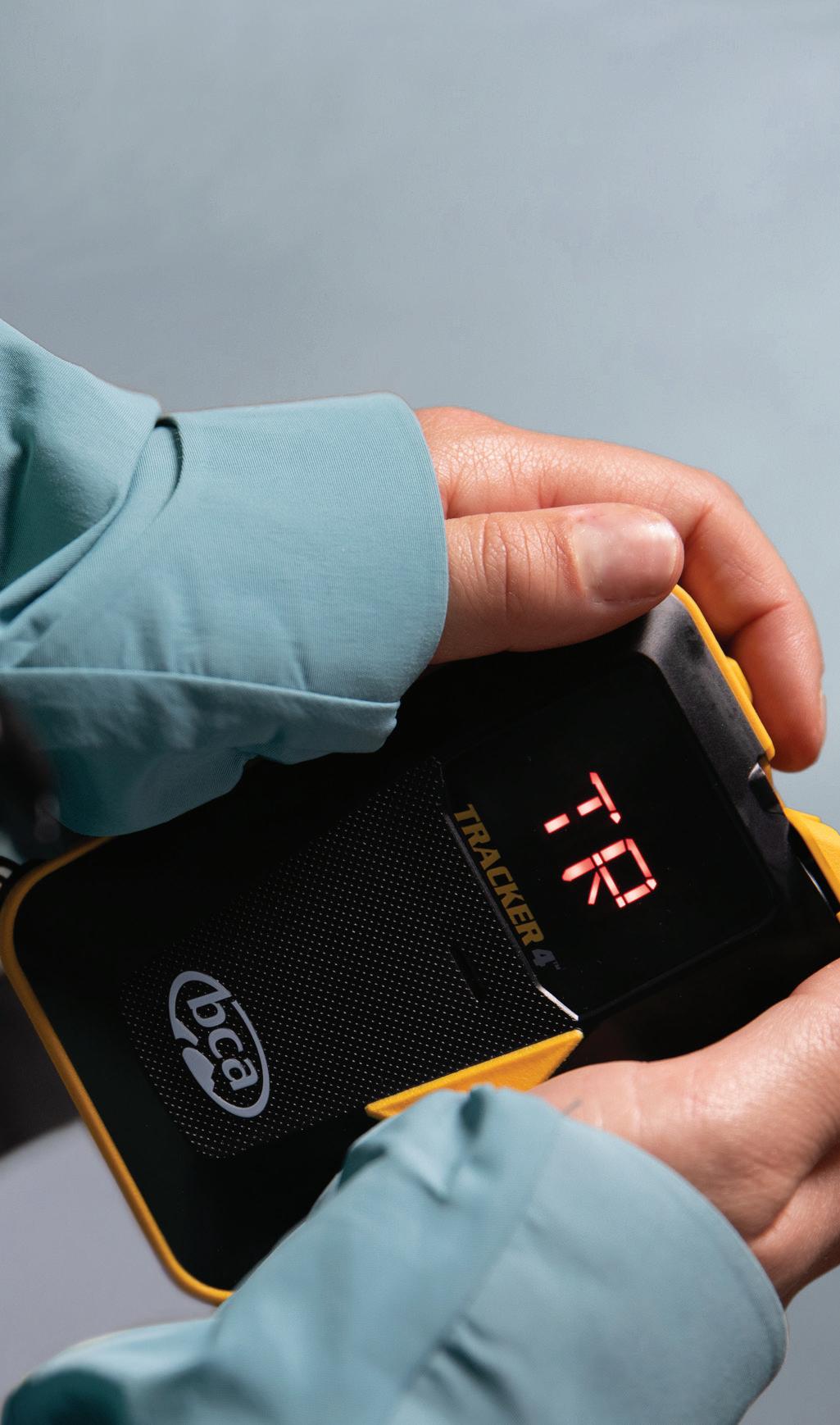
Dec. 17 - Late Mar.
8:00 19:00 (17:00 19:00) (Saturdays: 8:00 - 20:00)

Iwappara is one of the more popular resorts in the Yuzawa area. It is extremely convenient from the station (10 minutes) by shuttle bus, so it is quite possible to do a day trip from Tokyo. The main course is very wide open, making it a great place for beginners to practice their turns without fear of being run over by a speedy skier (or vice versa). The views from the top are nice, and the village area around the ski area has a nice selection of restaurants.
NASPA NEW OTANI

(025) 780-6888 www.naspanewotani.com
Dec. 23 - Apr. 2 8:30 - 17:00
NASPA is a relatively new ski resort (opened in 1992) whose claim to fame is being one of the last skiers-only resorts left in Japan. The ski hill is behind the deluxe New Otani Hotel. The resort definitely caters toward families who ski and want to stay in luxury. Guests can enjoy the excellent hot springs, Jacuzzis, a swimming pool, fitness center and a selection of restaurants. Its location near the station makes for a quick, convenient ski weekend from Tokyo, if you want to get in a few turns (on skis) with the family.
JOETSU KOKUSAI SKI RESORT




(025) 782-1028 www.jkokusai.co.jp
Dec. 3 - Apr. 2 8:00 - 21:00 (17:00 - 21:00)
One of the largest ski resorts in Japan, Joetsu Kokusai boasts four zones catering to different levels that satisfied a wide range of skiers and snowboarders. There is a kids park right outside the hotel, rentals and ski school programs for beginners. Enjoy soaking in an onsen and dining on local cuisine after a day on the slopes. There are also free events held throughout the season.
ACCESS By Train: Joetsu Shinkansen from Tokyo to Echigo Yuzawa Station (77 minutes) then train to Joetsu Kokusai (12 minutes)
Longest Course: Top Elevation: 690m 8 courses Beginner Intermediate Advanced Lifts Gondola Park Longest Course: 2.2km Top Elevation: 690m Base Elevation: 430m 38% 37% 25% 8 courses Beginner Intermediate Advanced Lifts Gondola 2 1 2 Park 20 courses Beginner Intermediate Advanced Lifts Gondola Longest Course: 4,000m Top Elevation: 985m Base Elevation: 400m 40% 40% 20% 20 courses Beginner Intermediate Advanced Lifts Gondola 2 7 16 courses Park 16 courses Park
1 DAY TICKET Adults ¥5,200 Kids ¥2,600
Yuzawa, Niigata
1 DAY TICKET Adults ¥4,500 Kids ¥2,500
ACCESS By Train and Shuttle Bus: 77 minutes from Tokyo Station to Echigo Yuzawa Station then shuttle bus from Echigo Yuzawa Station (10 minutes)
Yuzawa, Niigata
1 DAY TICKET Adults ¥4,500 Kids ¥3,500
ACCESS By Train and Free Shuttle Bus: Joetsu Shinkansen to Echigo Yuzawa Station (77 minutes) then free shuttle bus to NASPA Ski Garden (5 minutes)
Yuzawa, Niigata
1 DAY TICKET Adults ¥4,300 Kids ¥2,500
Park
Winter 2023 | 35
Minamiuonuma, Niigata
Park Park Park
MYOKO SUGINOHARA
(0255) 86-6211 www.princehotels.co.jp/ski/myoko
Dec. 24 - Mar. 26 8:30 16:30
Myoko Kogen is simply one of the naturally prettiest ski areas in Japan. Suginohara is part of Prince Hotels (although there is no hotel here), and the facilities are well maintained. The runs above the gondola are where advanced skiers and powder hounds will have the most fun. The resort has 17 trails, a terrain park, kids sledding area (ask about kids skiing free) and six onhill restaurants. Suginohara also boasts one of Japan’s longest top-to-bottom, an 8.5-kilometer thigh burner that will test anyone’s meddle if left for the last run of the day. The stunning view of Lake Nojiri below from the gondola makes it worth the trip alone.
By Train: 120 minutes from Tokyo Station to Myoko Kogen Station By Car: 180 minutes from Tokyo
(0255) 87-2125 www.akakura-ski.com







Dec. 10 - Apr. 2 8:30 - 22:00 (17:00 - 22:00)
1 DAY TICKET Adults ¥6,000 Kids ¥1,000
Akakura Ski Resort is located at the bottom of Mt. Myoko and is the largest resort in the Myoko Heights area. The resort has a nice variety of courses as well as powder stashes and some challenging courses on the old “Champions” side of the mountain. The town’s hot springs date back to 1814, and there is no better way to finish off a day on the mountain. The Akakura Resort & Spa sits majestically on the slopes. It’s a great place to stay if you want ski in/ski out luxury. The area averages about 13 meters of snow annually, so there is plenty of fluffy stuff, and it has a pleasant natural beauty. Akakura has a nice variety of courses, but the most challenging runs are on the old “Champions” side of the mountain.
SEKI ONSEN
(0255) 82-2316 www.sekionsen.com
Mid Dec. - early May 9:00 - 17:00
1 DAY TICKET Adults ¥3,800 Kids ¥2,800
Seki is the highest ski area in the Myoko Kogen area and, even though there are just two lifts, there is access to many powder runs. This is a locals mountain, and they check the weather reports and know when the storms will hit, sometimes dropping one or two meters of new snow overnight. It pays to get up early if you want first tracks. Don’t expect groomers; this is natural terrain and free riding at its finest: tree runs, natural pipes and some good hits.
CHARMANT HIUCHI
(025) 568-2244 http://charmant-hiuchi.jp Dec. 16 - early May 8:30 - 16:30

1 DAY TICKET
Adults ¥4,100
Kids ¥3,050
Charmant is a locally owned and operated ski resort most of your friends do not know about but may wish they did. The resort is literally right on the Japan Sea (you can see it from the top lifts) and gets some of the heaviest snow dumps around. It is also a healthy drive from Tokyo (four hours), but is worth the trip if you enjoy short lift lines and uncrowded slopes. There are lots of ungroomed areas and advanced terrain including a 1,000-meter powder course. The proximity to the sea means there is some excellent seafood nearby as well, and you can ski straight through Golden Week.
Longest Course: Top Elevation: Base Elevation: 20% 45% 16 courses Beginner Intermediate Advanced Lifts Gondola 1 2 Park Longest Course: 2,700m Top Elevation: 1,009m Base Elevation: 501m 20% 45% 35% 16 courses Beginner Intermediate Advanced Lifts Gondola 1 2 Park Longest Course: Top Elevation: Base Elevation: 20% 30% 6 courses Beginner Intermediate Advanced Lifts Gondola 1 Park 1 Longest Course: 1,600m Top Elevation: 1,620m Base Elevation: 1,000m 20% 30% 50% 6 courses Beginner Intermediate Advanced Lifts Gondola 1 Park 1 Park Park Longest Course: Top Elevation: Base Elevation: 40% 40% 1 2 16 courses Beginner Intermediate Advanced Lifts Gondola Park Longest Course: 8,500m Top Elevation: 1,855m Base Elevation: 731m 40% 40% 20% 1 2 16 courses 2 Beginner Intermediate Advanced Lifts Gondola Park
1 DAY TICKET Adults ¥4,800 Kids FREE
Myoko, Niigata
AKAKURA ONSEN
ACCESS By Train: Shinkansen from Tokyo Station to Nagano Station (1 hr., 45 min.), then take the JR Shinetsu Honsen Line to Myoko Kogen Station, then 10 minutes by bus
Akakura Onsen, Niigata
ACCESS By Train: Shinkansen from Tokyo Station to Nagano Station (1 hr., 45 min.), then take the JR Shinetsu Honsen Line to Sekiyama Station, then 20 min. by taxi
Seki Onsen, Niigata
ACCESS Car access is recommended: Train and bus service is inconvenient. From Tokyo it takes 4 hours by car, depending on traffic and weather
Park
36 | TRAVELER
Itoigawa, Niigata
Park Park Park
GIFU
As far as resorts in central Honshu go, Gifu gets much less attention than Nagano, Niigata and Gunma. Nonetheless there are a number of quality resorts in the region that primarily service the Nagoya and Kansai regions. Less than a couple hours from the main Gifu ski resorts is the Edo-style town of Takayama, known as “Little Kyoto.” Takayama’s master carpenters built some beautiful shrines and temples here at the base of the Japan Alps. Also in the region, along the border of Gifu and Toyama prefectures are the World Heritage villages of Shirakawa-go and Gokoyama, known for the thatched roof houses built in gassho-zukuri hands) style. These A-frame farmhouses are constructed to withstand the heavy snowfall that blankets the region each year. If you are looking for good skiing and mixing in some great cultural experiences, Gifu is a great winter destination.
TAKASU SNOW PARK




(0575) 72-7000 www.takasu.gr.jp
Early Dec. - late Apr. 8:00 - 16:30
Takasu is well known to park riders. The resort has a large free ride park that includes kickers, rails, boxes and one of the biggest super pipes in Japan. There is also a 600-meter professional boarder cross course and a mogul course. The resort is the training grounds for many of Japan’s rising stars and has hosted a number of competitions including the FIS Snowboard World Cup. Aside from the amazing pipe and park, winter sports enthusiasts of all levels can enjoy the open-faced free ride terrain including a 4,800-meter trail, one of longest in western Japan, and several other 4,000-meter trails. There are even some backcountry tours through Dainichi Valley.
ACCESS By Bus: A bus leaves Nagoya at 8 a.m. stopping at both Takasu and Dynaland. The trip takes about 2 hours and 45 minutes
DYNALAND
(0575) 72-6636 www.dynaland.co.jp

Mid-Dec. - early Apr. 8:00 - 16:30


1 DAY
TICKET Kids ¥2,100
Dynaland is the largest of the Takasu ski resorts. There are 19 runs; the longest a 3,200-meter thigh burner. There is a shared ticket to neighboring Takasu Snow Park and two places on the mountain that connect the resorts. If you want to get out on the slopes first thing in the morning, the Hotel Villa Mon-Saint is right in front of the resort, and there are 6 a.m. openings for first tracks on selected dates. The resort has featured a resident DJ who will take music requests, and you can do some good for Mother Nature while having a lunch break since the Dynaland Eco Project collects proceeds from resort restaurants to support a Gifu tree planting project. Night skiing runs until 11 p.m.
ACCESS By Bus: A bus leaves Nagoya at 8 a.m. stopping at both Takasu and Dynaland. The trip takes about 2 hours and 45 minutes
Winter 2023 | 37
TICKET
Beginner Intermediate Advanced Lifts Gondola
Park
Park














38 | TRAVELER Travel &Adventure DIRECTORY w w w . k o d o t r a v e l . c o m T A I L O R E D P R E M I U M A D V E N T U R E T R A V E L I N J A P A N www.seafarijapan.com
BAIRD TAPROOMS





BASHAMICHI | NAKA MEGURO | HARAJUKU | KICHIOJI
TAKADANOBABA | NUMAZU FISHMARKET | CAMP BAIRD
BREWERY GARDENS SHUZENJI BAIRDBEER.COM


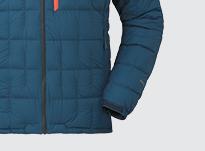













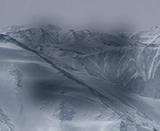



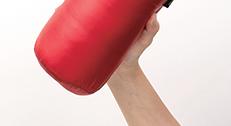



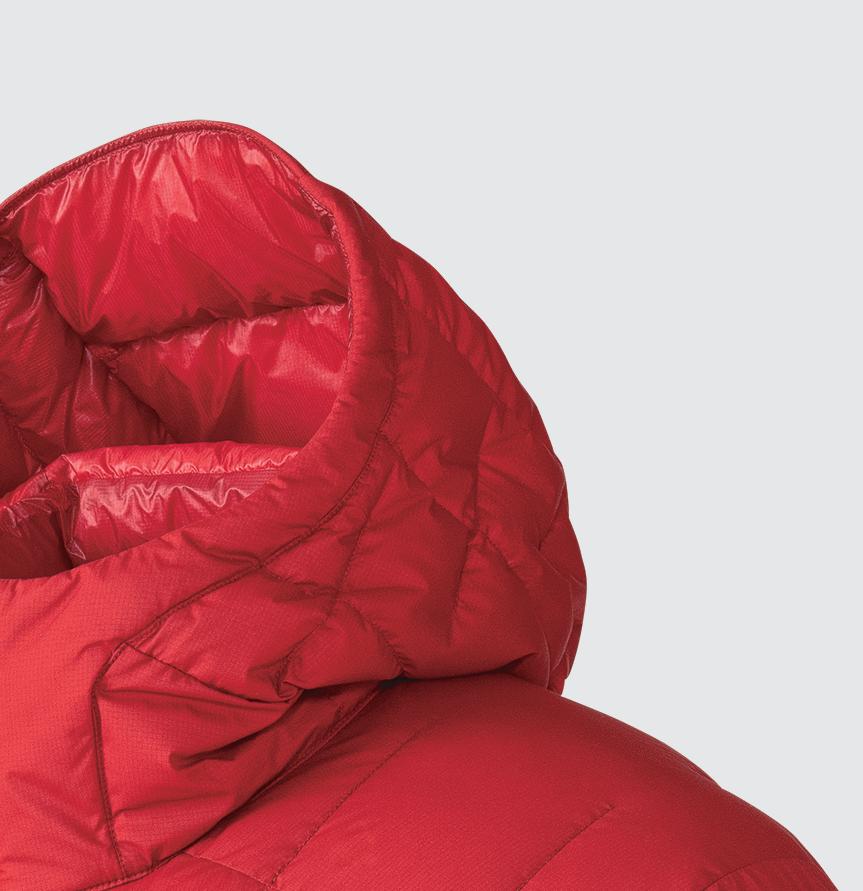



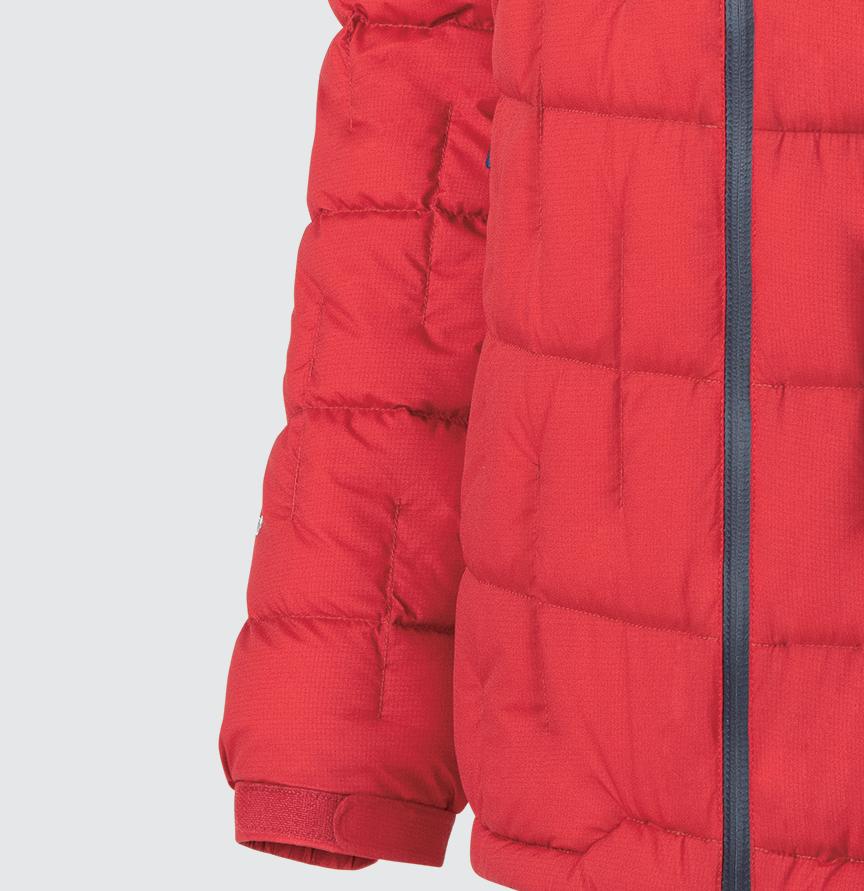





























































36 | TRAVELER















































































































































 BY BILL ROSS
BY BILL ROSS



















 INTERVIEW WITH TOMOKI FUSE WITH BILL ROSS PHOTOS COURTESY OF KAMMUI
INTERVIEW WITH TOMOKI FUSE WITH BILL ROSS PHOTOS COURTESY OF KAMMUI













































































































































































































































































